THE EXHIBITION HAS BEEN EXTENDED THROUGH THE END OF OCTOBER, 2018
John Watts’ Art Exhibition at The Dana Library Rutgers University
MONOLITHS IN CLAY
An exhibition of ceramic sculptures
And Giclee Prints
by John Watts
May 3rd through October 31th, 2018
The Dana Library Rutgers University, 4th Floor
185 University Ave, Newark, New Jersey
50th DANA LIBRARY ANNIVERSARY
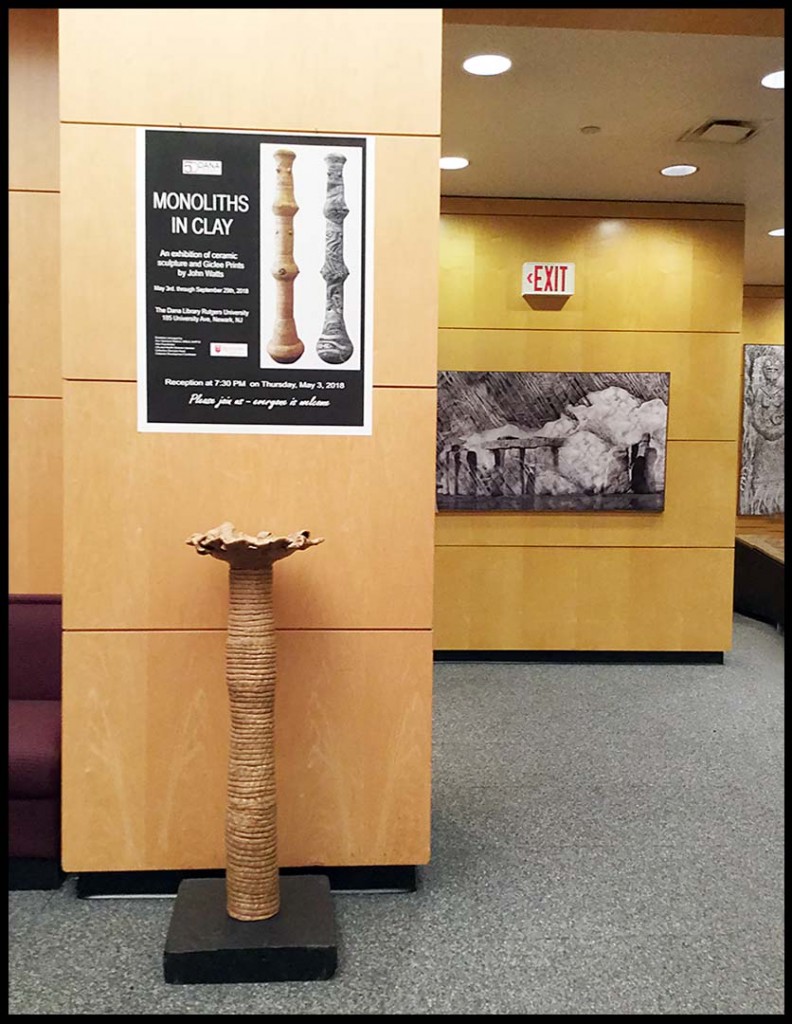 John Watts’ Art Exhibition at The Dana Library Rutgers University
John Watts’ Art Exhibition at The Dana Library Rutgers University
Artwork by John Watts
Photographs by Ing-On Vibulbhan-Watts
John Watts, my husband, has his art exhibition on the fourth floor of the Dana Library, Rutgers University, Newark, NJ. Upon stepping out of the Library elevator, one walks thought a foyer where on the right side is the reception office of the famous, Jazz Institute. Beyond this is hallway to a study area.
The left side of the foyer however, opens into a long art gallery that lead to the library conference room. This library art gallery is where John has his seven feet tall and medium size sculptures displayed. All together there are thirteen pieces.
There are ten showcases lining the walls, which are filled with John’s pottery, small clay sculptures, and miniature bronze sculptures embedded with semiprecious stones. The showcases also hold John’s, “wearable art”, which are one of a kind pieces of jewelry. His two dimension artwork is hung above these pieces.
There are twelve of his large canvas artwork prints on the walls outside of the display cases These are examples of a lifetime of artwork filling this space where students and educators pass though to the conference room allowing them to see and experience the work.
I like this art gallery as it is it is just like street art, in that it is for everybody who passes by. While John and I were putting up the artwork some students stopped to take pictures with their i Phones.
Some students asked questions about the art. Hopefully the exhibition will inspire some who pass by consciously, or subconsciously. This will make and artist happy and encourage everyone to express his or her ideas and share them with others.
The benefit of artwork is that it can provoke everyone to think for themselves, rather than becoming part of a flock of sheep led by the nose for those with power.
Ing-On Vibulbhan-Watts, Saturday, May 26, 2018 (Posted on Google+)
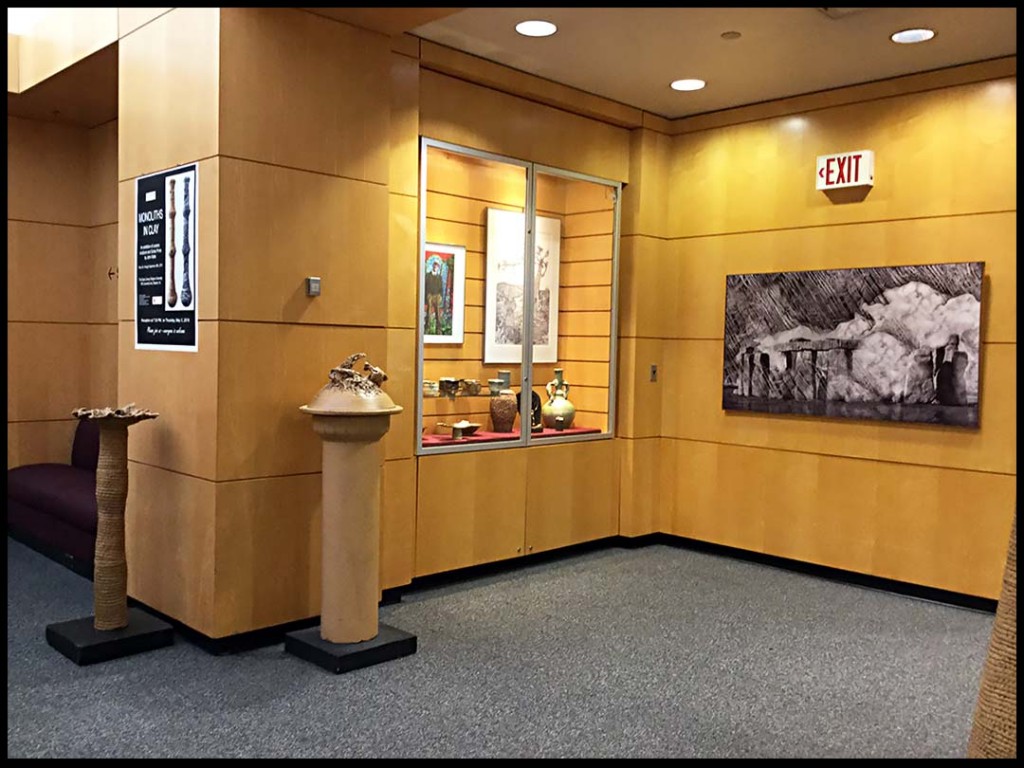 The following message is John’s own words explaining his artwork:
The following message is John’s own words explaining his artwork:
My clay sculpture reflects of a lifelong interest in monolithic structures. As a child in Wales in the early nineteen fifties, I was fascinated by old gravestone monuments, drawing them in detail. The stone circles of early Britons also influenced my childhood imagination, particularly Stonehenge, and the local Neolithic stone on the Gower Peninsular of South Wales called, Arthur’s Stone. I was also captivated by, Cleopatra’s Needle, a solitary Egyptian obelisk, at the edge of the River Thames in London, that I would view every summer when we would visit my aunt. My teenage years of the late nineteen fifties in Newark, New Jersey offered the red brick smoke stacks of factories surrounding my neighborhood. These towering hollow columns would bellow forth huge plumes of smoke, like offerings to ancient gods. Then at the ripe old age of twenty-six, in nineteen sixty-eight, the movie, 2001 A Space Odyssey, came out, and I went completely bonkers for the alien monoliths.
My giclee canvas prints in this exhibit are two-dimensional visions of my same artistic obsession with imagery steeped in symbolism, mythology. Each canvas holds out the possibility of where one might find such Monoliths. There is an attention to textural detail in all my work. This filling of empty space in art work is historically referred to as Horror Vacui. My source for this imagery is again my childhood in Wales, observing the Celtic crosses in graveyards, and the Pre Raphaelite, and Victorian illustrations of childrens books in heraldic epic stories like, King Arthur and The Knights Of The Round Table. Even my pottery and Jewelry suggests an affinity with unnamed civilizations lost in antiquity.
John Watts, Saturday, May 26, 2018
For more information please visit the following links:
https://ingpeaceproject.com/john-watts-plays-artwork-videos/
https://ingpeaceproject.com/john-watts-plays-artwork-videos/johns-pottery-student-exhibition/
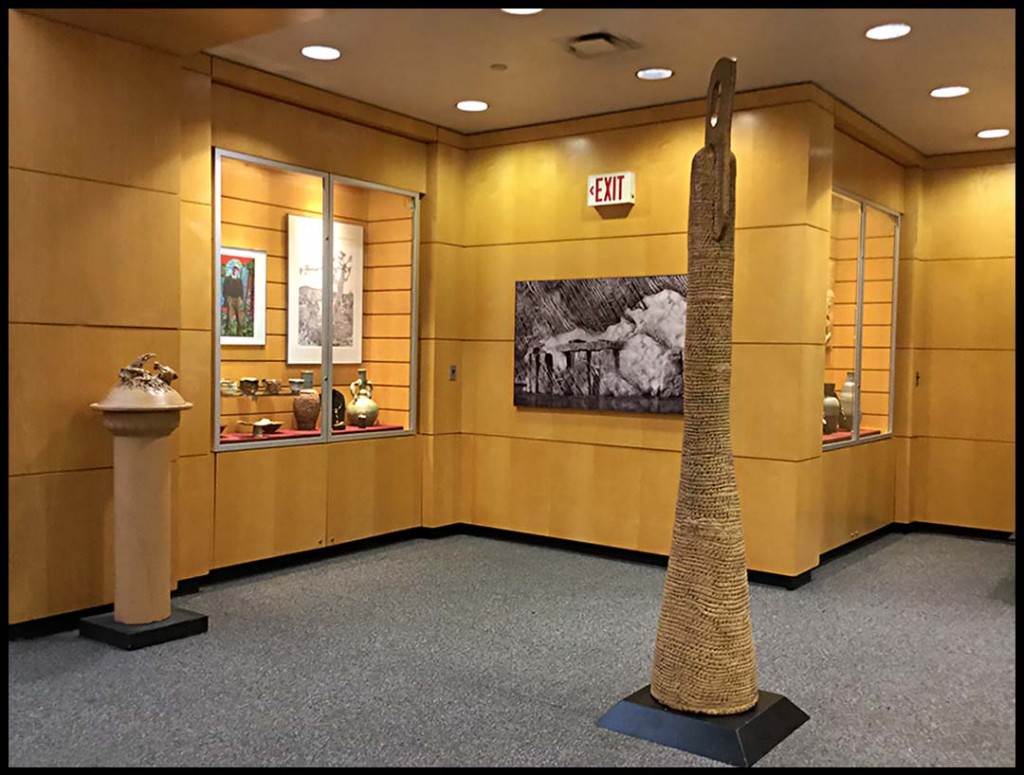

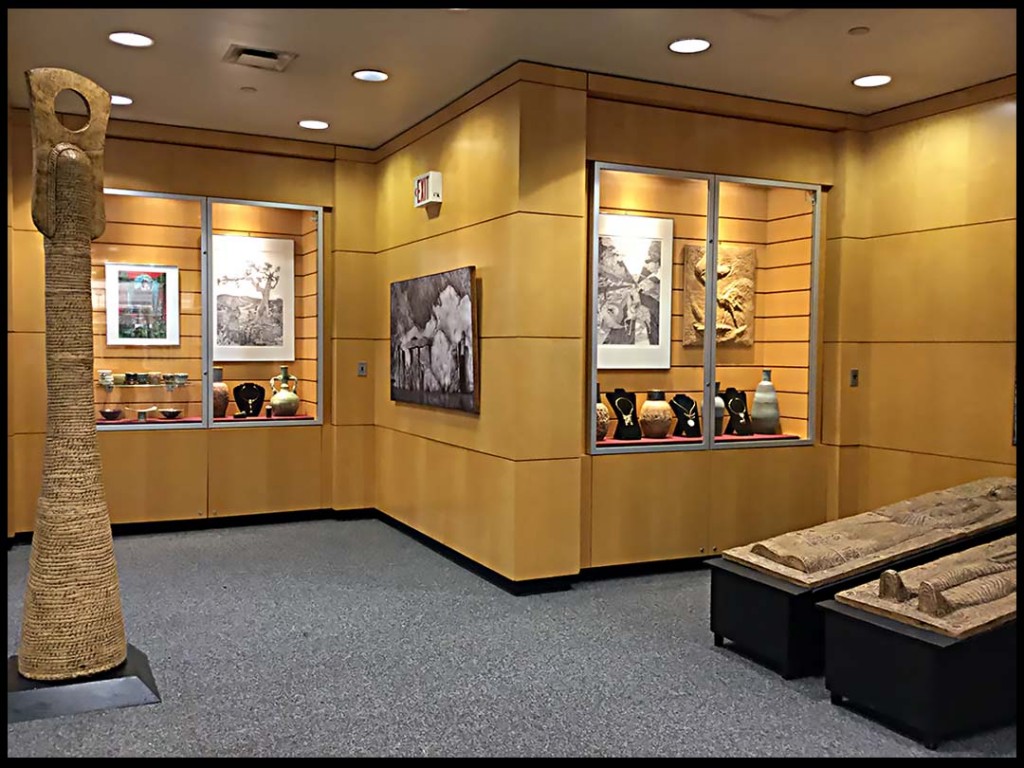
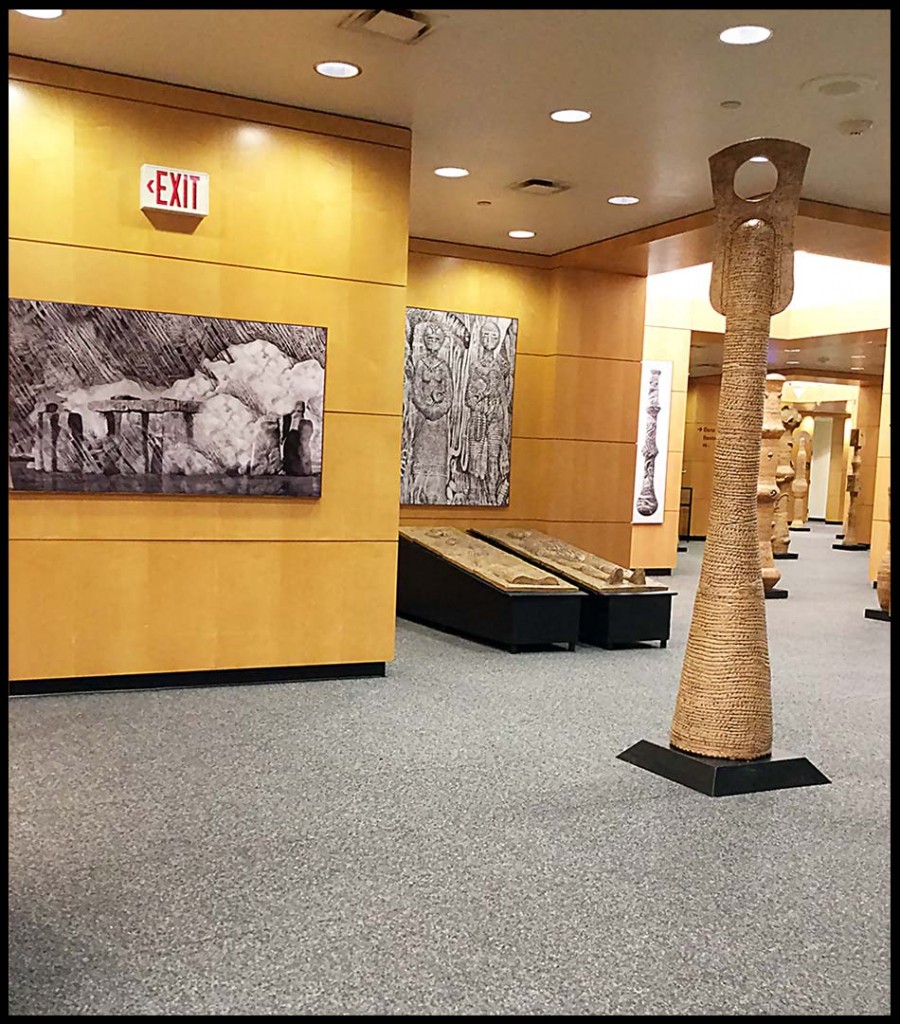
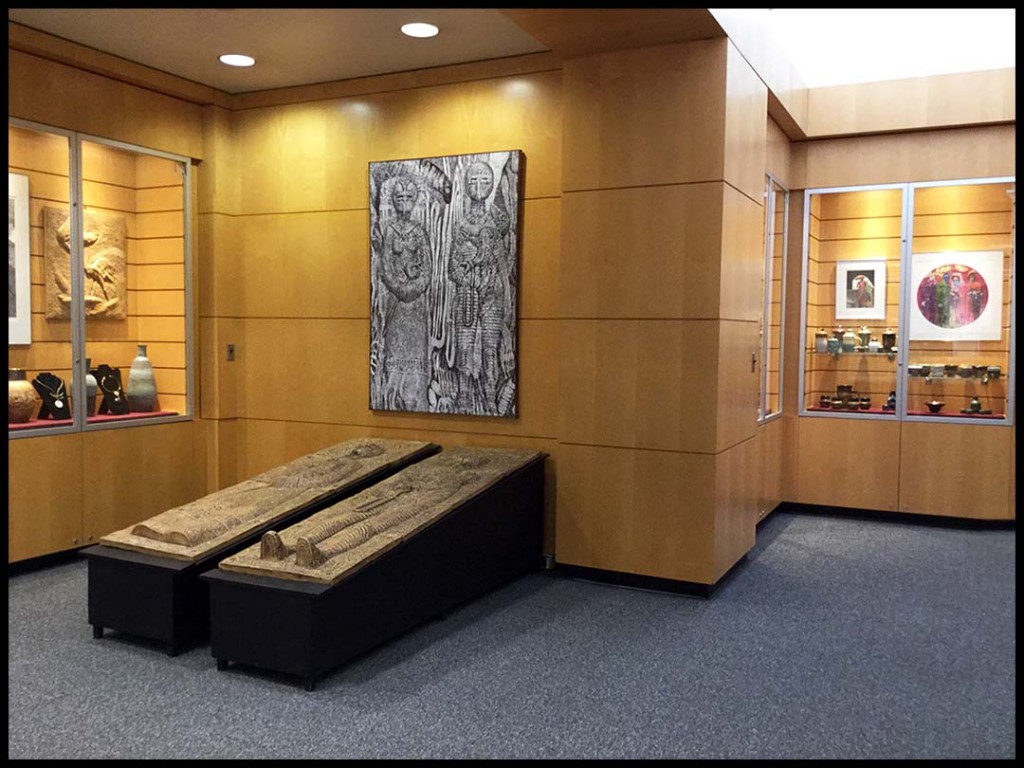
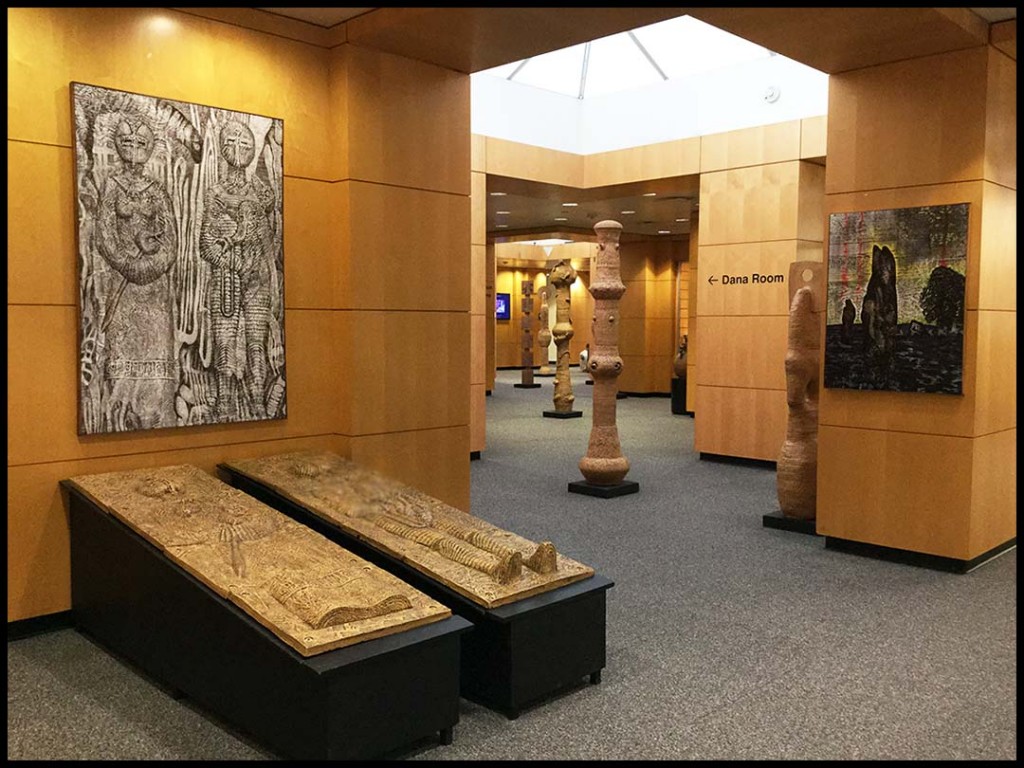 Male and Female Figures by John Watts
Male and Female Figures by John Watts
Artwork by John Watts, Photograph by Ing-On Vibulbhan-Watts
John Watts, my husband, has his art exhibition on the fourth floor of the Dana Library, Rutgers University, Newark, NJ. Upon stepping out of the Library elevator, one walks thought a foyer where on the right side is the reception office of the famous, Jazz Institute. Beyond this is hallway to a study area.
 Sculptures Drawing by John Watts
Sculptures Drawing by John Watts
Stones-2 by John Watts
Wedding by John Watts
Parade by John Watts
Dino Landscape by John Watts
Swansea Landscape by John Watts
Stones Twice by John Watts
Birth Of A Dragon by John Watts
Blue Moon by John Watts
Cinderella At Midnight by John Watts
The Race by John Watts
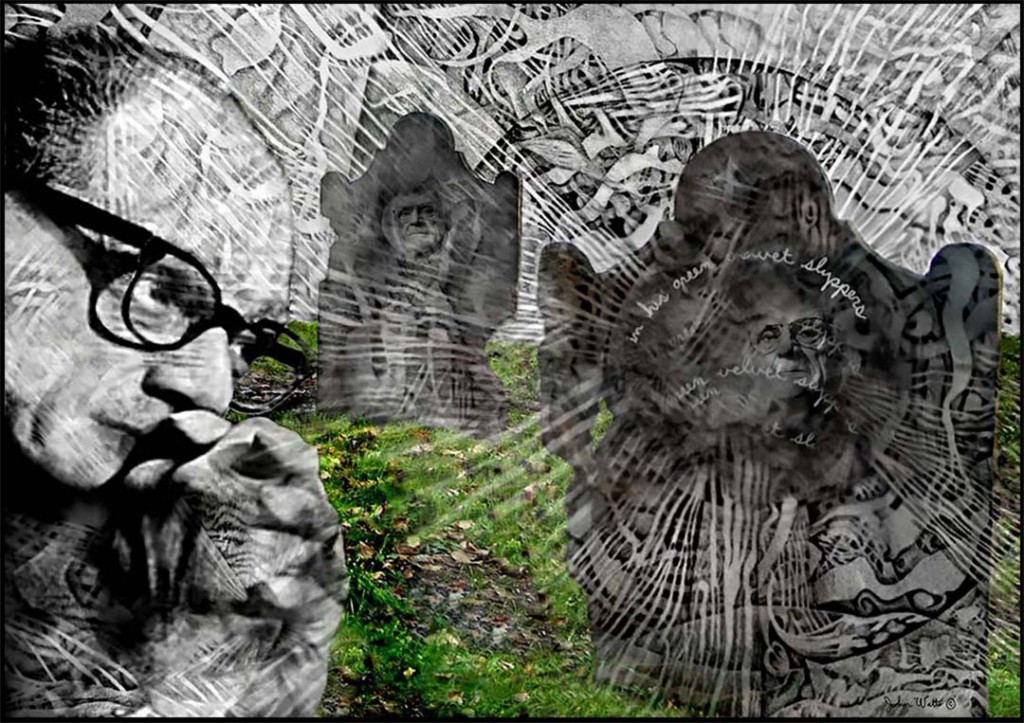 Remember The Saleman by John Watts
Remember The Saleman by John Watts
I Wish by John Watts
Journey Into Night by John Watts
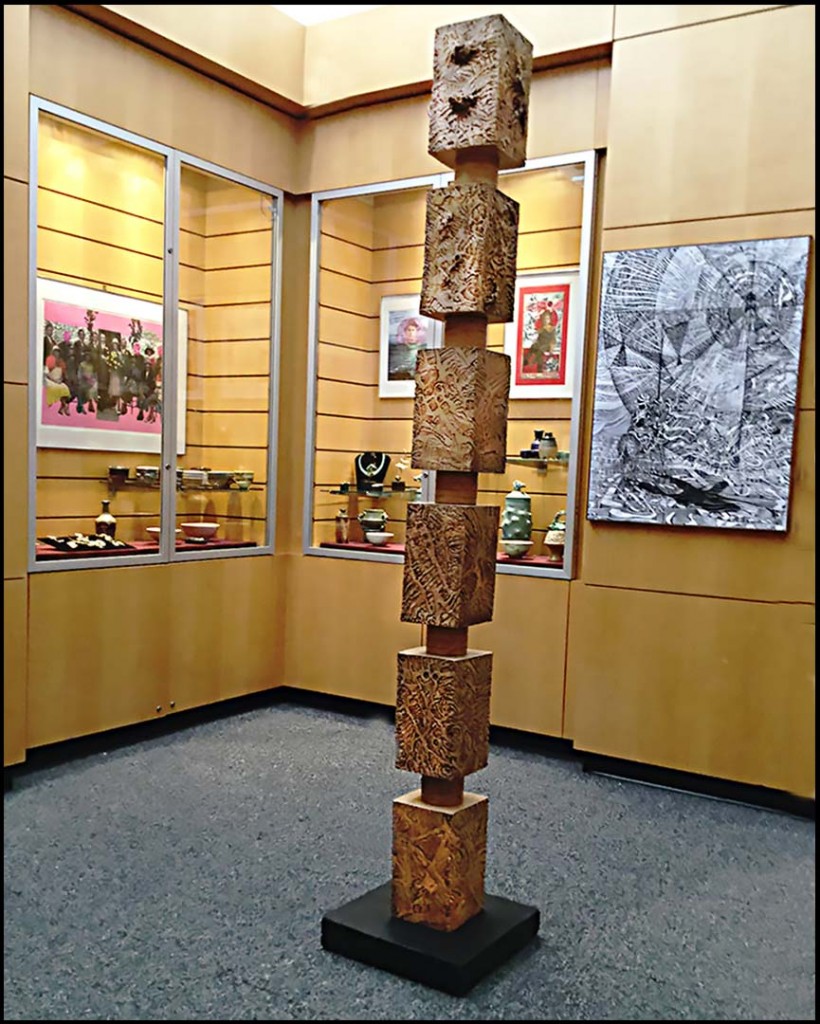
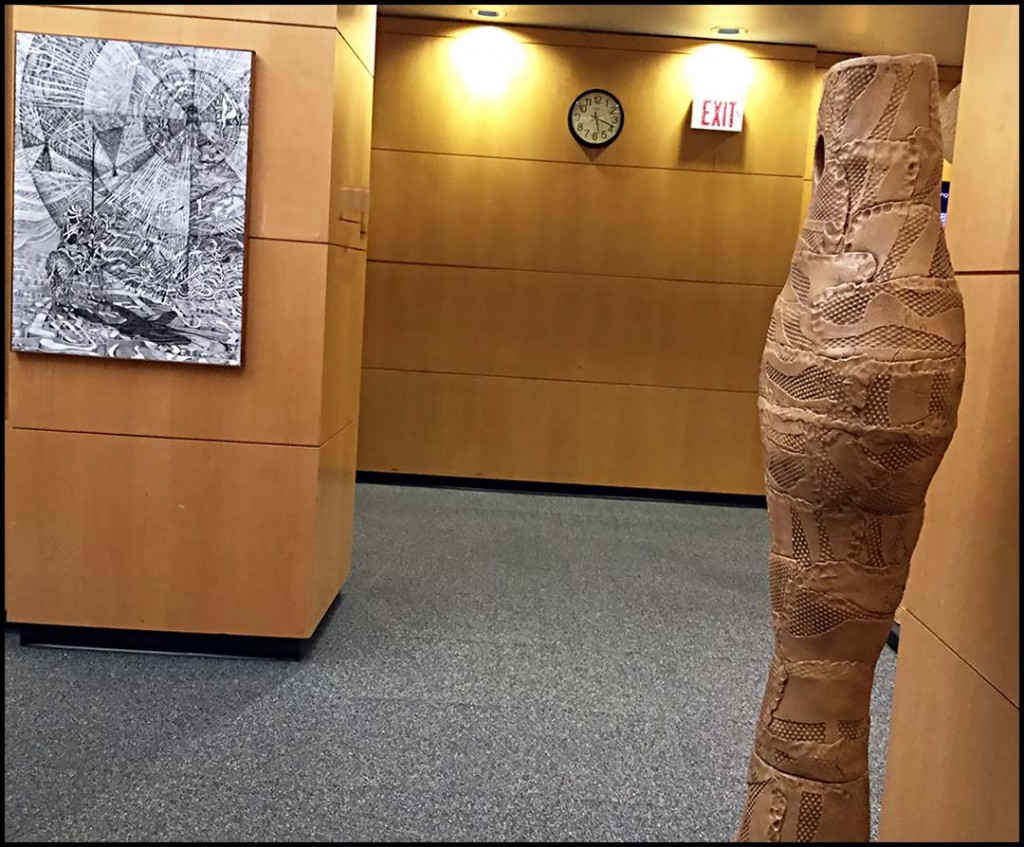
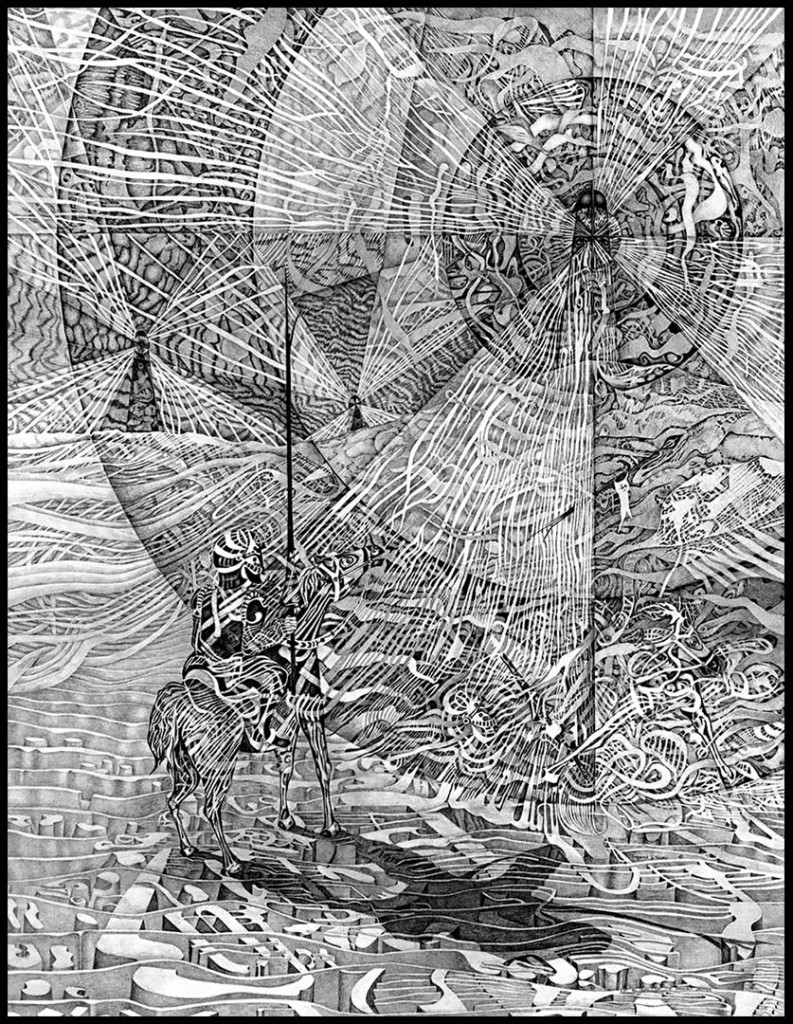 Impossible Dreamer by John Watts
Impossible Dreamer by John Watts
Invisible – Portrait of Ralph Allison
Milkwood – Portrait of Dylan Thomas
Dylan Marlais Thomas (27 October 1914 – 9 November 1953) was a Welsh poet and writer whose works include the poems “Do not go gentle into that good night” and “And death shall have no dominion“; the ‘play for voices’ Under Milk Wood; and stories and radio broadcasts such as A Child’s Christmas in Wales and Portrait of the Artist as a Young Dog. He became widely popular in his lifetime and remained so after his premature death at the age of 39 in New York City. By then he had acquired a reputation, which he had encouraged, as a “roistering, drunken and doomed poet”.[3]
Thomas was born in Swansea, Wales, in 1914. An undistinguished pupil, he left school at 16 and became a journalist for a short time. Many of his works appeared in print while he was still a teenager; however, it was the publication in 1934 of “Light breaks where no sun shines” that caught the attention of the literary world. While living in London, Thomas met Caitlin Macnamara, whom he married in 1937. Their relationship was defined by alcoholism and was mutually destructive.[3] In the early part of their marriage, Thomas and his family lived hand-to-mouth; they settled in the Welsh fishing village of Laugharne.
Thomas came to be appreciated as a popular poet during his lifetime, though he found earning a living as a writer difficult. He began augmenting his income with reading tours and radio broadcasts. His radio recordings for the BBC during the late 1940s brought him to the public’s attention, and he was frequently used by the BBC as a populist voice of the literary scene.
Thomas first travelled to the United States in the 1950s. His readings there brought him a degree of fame, while his erratic behaviour and drinking worsened. His time in America cemented his legend, however, and he went on to record to vinyl such works as A Child’s Christmas in Wales. During his fourth trip to New York in 1953, Thomas became gravely ill and fell into a coma, from which he never recovered. He died on 9 November 1953. His body was returned to Wales, where he was interred at the village churchyard in Laugharne on 25 November 1953.
For more information please visit the following link:
https://en.wikipedia.org/wiki/Dylan_Thomas
Statue of Dylan Thomas near the National Waterfront Museum
Under Milk Wood is a 1954 radio drama by Welsh poet Dylan Thomas, commissioned by the BBC and later adapted for the stage. A film version, Under Milk Wood directed by Andrew Sinclair, was released in 1972.
An omniscient narrator invites the audience to listen to the dreams and innermost thoughts of the inhabitants of the fictional small Welsh fishing village Llareggub (“bugger all” backwards).
They include Mrs. Ogmore-Pritchard, relentlessly nagging her two dead husbands; Captain Cat, reliving his seafaring times; the two Mrs. Dai Breads; Organ Morgan, obsessed with his music; and Polly Garter, pining for her dead lover. Later, the town awakens and, aware now of how their feelings affect whatever they do, we watch them go about their daily business.
For more information please visit the following link:
https://en.wikipedia.org/wiki/Under_Milk_Wood
Invisible Man is a novel by Ralph Ellison, published by Random House in 1952. It addresses many of the social and intellectual issues facing African Americans early in the twentieth century, including black nationalism, the relationship between black identity and Marxism, and the reformist racial policies of Booker T. Washington, as well as issues of individuality and personal identity.
Invisible Man won the U.S. National Book Award for Fiction in 1953.[1] In 1998, the Modern Library ranked Invisible Man 19th on its list of the 100 best English-language novels of the 20th century.[2]Time magazine included the novel in its TIME 100 Best English-language Novels from 1923 to 2005, calling it “the quintessential American picaresque of the 20th century”, rather than a “race novel, or even a bildungsroman“.[3]Malcolm Bradbury and Richard Ruland recognize an existential vision with a “Kafka-like absurdity”.[4] According to The New York Times, former U.S. president Barack Obama modeled his memoir Dreams from My Father on Ellison’s novel.[5]
For more information please visit the following link:
https://en.wikipedia.org/wiki/Invisible_Man
Ellison says in his introduction to the 30th Anniversary Edition[6] that he started to write what would eventually become Invisible Man in a barn in Waitsfield, Vermont in the summer of 1945 while on sick leave from the Merchant Marine. The book took five years to complete with one year off for what Ellison termed an “ill-conceived short novel.”[7] Invisible Man was published as a whole in 1952. Ellison had published a section of the book in 1947, the famous “Battle Royal” scene, which had been shown to Cyril Connolly, the editor of Horizon magazine by Frank Taylor, one of Ellison’s early supporters.
In his speech accepting the 1953 National Book Award,[8] Ellison said that he considered the novel’s chief significance to be its experimental attitude. Before Invisible Man, many (even most) novels dealing with African Americans were seen and even written solely for social protest. Most notably, Native Son and Uncle Tom’s Cabin, and while Ellison dovetailed two movements, The Harlem Renaissance and the Black Arts Movement, neither defined his work completely, which reinforced his claim to a unique experimental narrative that broke with tradition. At the Federal Writers’ Project, Ellison had previously interviewed many older people who were living examples to the movement. Ellison once quipped that he needs to get real angry and start talking with the old folk again[further explanation needed].
Ellison was also not a Black Arts Movement writer. Many of the notable writers of black arts movement were disillusioned with Ellison[citation needed]. John Oliver Killens, denounced Invisible Man, like this: “The Negro people need Ralph Ellison’s Invisible Man like we need a hole in the head or a stab in the back. . . . It is a vicious distortion of Negro life.” He and Amiri Baraka were always at odds[citation needed].
Ellison’s style has some basis in modern symbolism[further explanation needed]. In the poem The Waste Land by T. S. Eliot.[9], using one notable example, Ellison was immediately impressed with its ability to merge his two greatest passions, that of music and literature. When asked later what he had learned from the poem, Ellison responded: imagery, and also improvisation—techniques he had only before seen in jazz.[10] But Ellison’s influences run deep. The aforementioned WPA, and what he called his literary ancestors, Ernest Hemingway, William Faulkner, Mark Twain and others, along with books such as Dostoevsky‘s Notes From Underground, and even as broad-reaching as speculative writers such as Kenneth Burke, all of whom Ellison used to break away from classical African-American writing[clarification needed].
Ellison biographer Arnold Rampersad said that the character of the narrator “resembles no one else in previous fiction so much as he resembles Ishmael of Moby-Dick.” Ellison signals his debt in the prologue to the novel, where the narrator remembers a moment of truth under the influence of marijuana and evokes a church service: “Brothers and sisters, my text this morning is the ‘Blackness of Blackness.’ And the congregation answers: ‘That blackness is most black, brother, most black…’” In this scene Ellison “reprises a moment in the second chapter of Moby-Dick”, where Ishmael wanders around New Bedford looking for a place to spend the night and enters a black church: “It was a negro church; and the preacher’s text was about the blackness of darkness, and the weeping and wailing and teeth-gnashing there.” According to Rampersad, it was Melville who “empowered Ellison to insist on a place in the American literary tradition” by his example of “representing the complexity of race and racism so acutely and generously” in Moby-Dick.[11]
Ellison always believed that he would be a musician first and a writer second, and yet even so he had acknowledged that writing provided him a “growing satisfaction.” It was a “covert process”, according to Ellison: “a refusal of his right hand to let his left hand know what it was doing.”[12]
For more information please visit the following link:
https://en.wikipedia.org/wiki/Invisible_Man

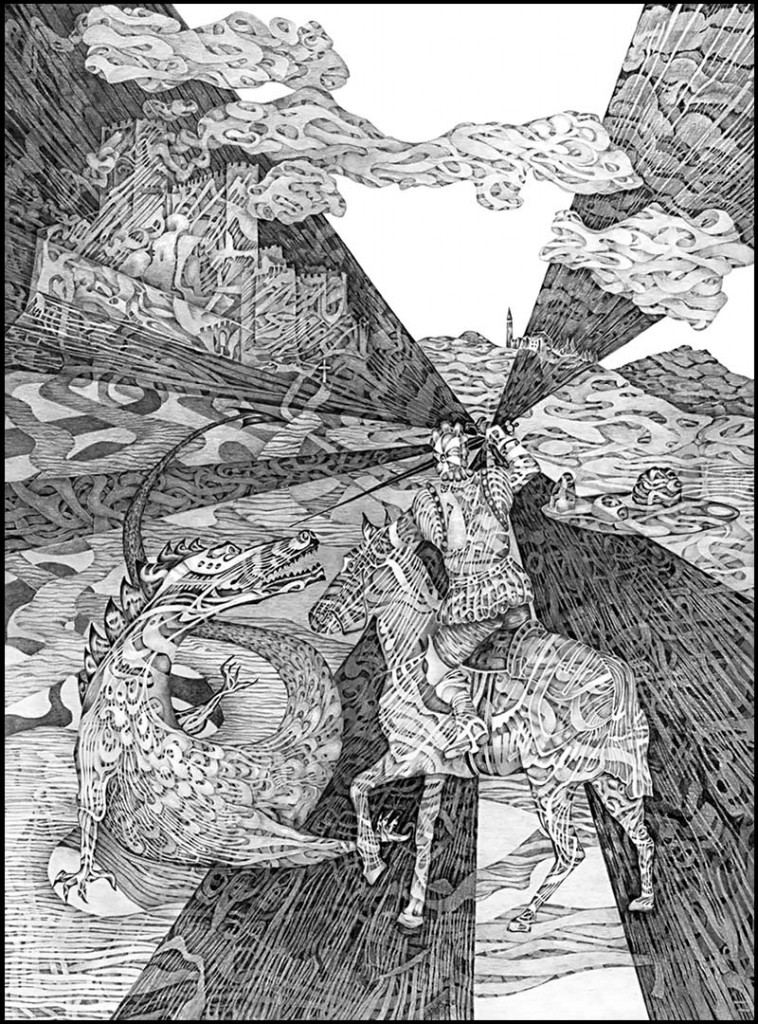 Homage To The Dragon by John Watt
Homage To The Dragon by John Watt
Pottery and Jewelry by John Watts
Jewelry by John Watts
Pottery and Jewelry by John Watts
Jewelry by John Watts
Jewelry by John Watts
Pottery by John Watts
Jewelry by John Watts
Jewelry by John Watts
Pottery by John Watts
Jewelry by John Watts
Pottery by John Watts
Jewelry by John Watts
Jewelry by John Watts
Pottery by John Watts
John Watts’ Art Exhibition at The Dana Library Rutgers University
Photograph by John Watts
MONOLITHS IN CLAY
An exhibition of ceramic sculptures
And Giclee Prints
by John Watts
May 3rd through September 29th, 2018
The Dana Library Rutgers University, 4th Floor
185 University Ave, Newark, New Jersey
The following message is John’s own words explaining his artwork:
My clay sculpture reflects of a lifelong interest in monolithic structures. As a child in Wales in the early nineteen fifties, I was fascinated by old gravestone monuments, drawing them in detail. The stone circles of early Britons also influenced my childhood imagination, particularly Stonehenge, and the local Neolithic stone on the Gower Peninsular of South Wales called, Arthur’s Stone. I was also captivated by, Cleopatra’s Needle, a solitary Egyptian obelisk, at the edge of the River Thames in London, that I would view every summer when we would visit my aunt. My teenage years of the late nineteen fifties in Newark, New Jersey offered the red brick smoke stacks of factories surrounding my neighborhood. These towering hollow columns would bellow forth huge plumes of smoke, like offerings to ancient gods. Then at the ripe old age of twenty-six, in nineteen sixty-eight, the movie, 2001 A Space Odyssey, came out, and I went completely bonkers for the alien monoliths.
My giclee canvas prints in this exhibit are two-dimensional visions of my same artistic obsession with imagery steeped in symbolism, mythology. Each canvas holds out the possibility of where one might find such Monoliths. There is an attention to textural detail in all my work. This filling of empty space in art work is historically referred to as Horror Vacui. My source for this imagery is again my childhood in Wales, observing the Celtic crosses in graveyards, and the Pre Raphaelite, and Victorian illustrations of childrens books in heraldic epic stories like, King Arthur and The Knights Of The Round Table. Even my pottery and Jewelry suggests an affinity with unnamed civilizations lost in antiquity.
John Watts, Saturday, May 26, 2018
John Watts working on his pottery and sculptures.
For more information please visit the following link:
https://ingpeaceproject.com/john-watts-plays-artwork-videos/johns-pottery-student-exhibition/
Exhibition arranged by Ann Veerlamd Walkins MSLS, AHIP-D
Art Coordinator, Life and Health Science Librarian, Collection Services Head, Collection Department coordinator
Rutgers University Libraries
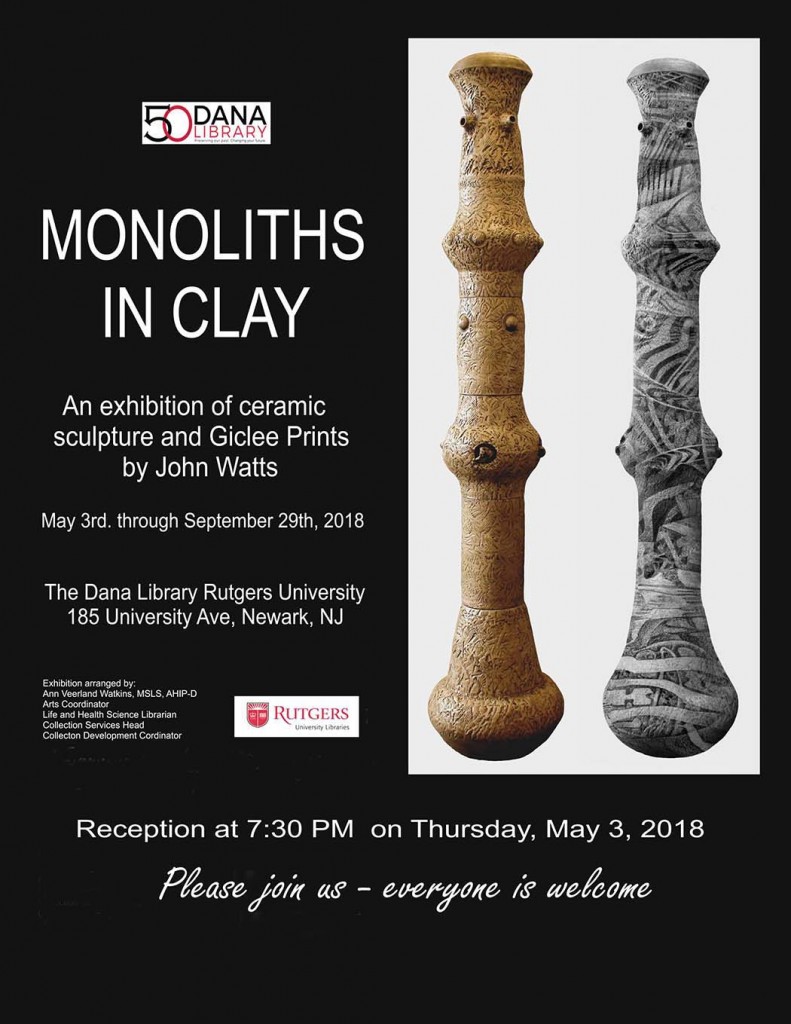


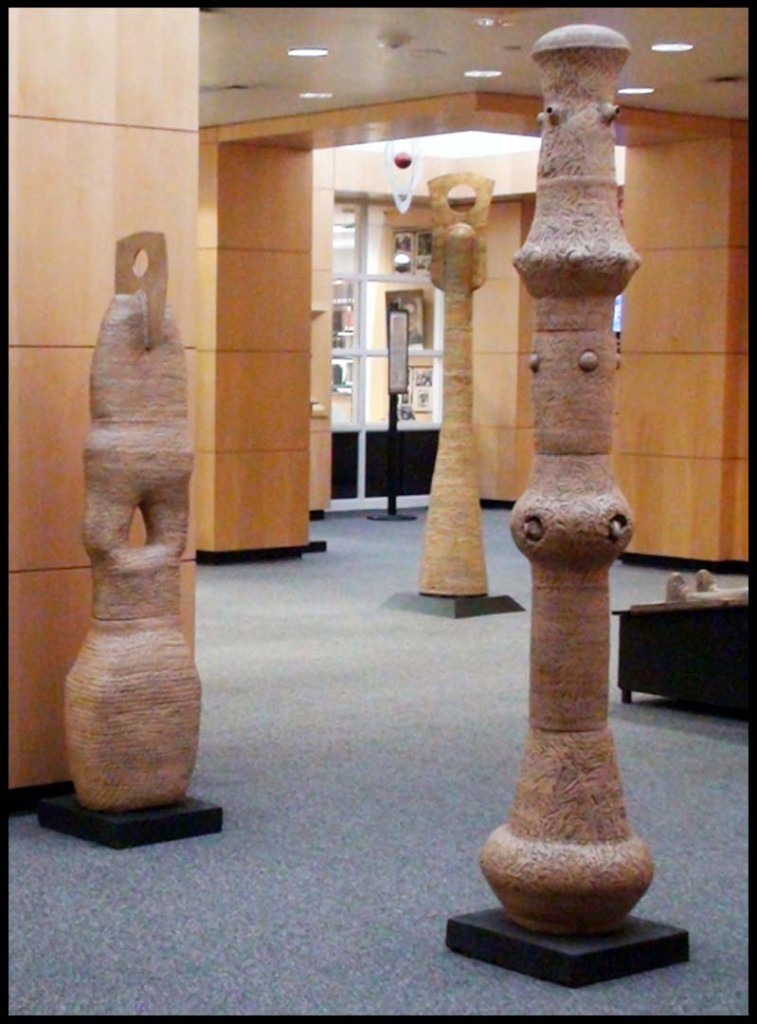
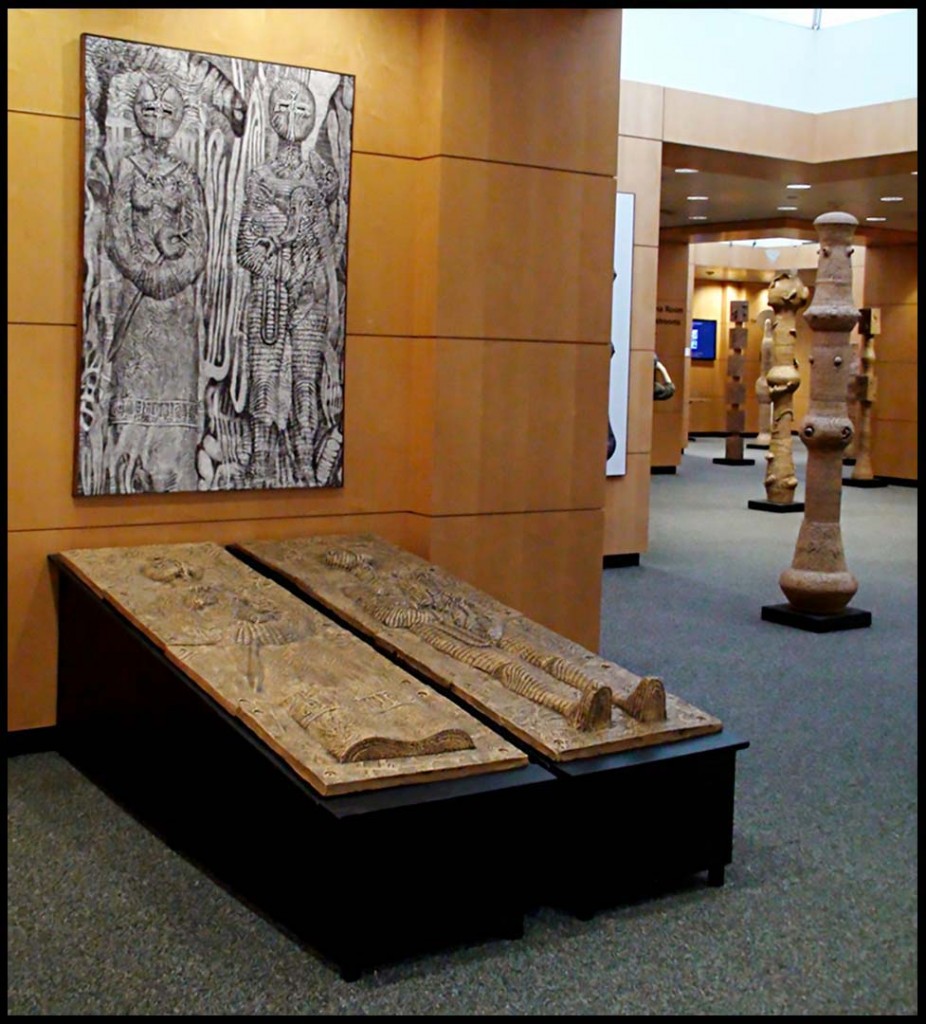
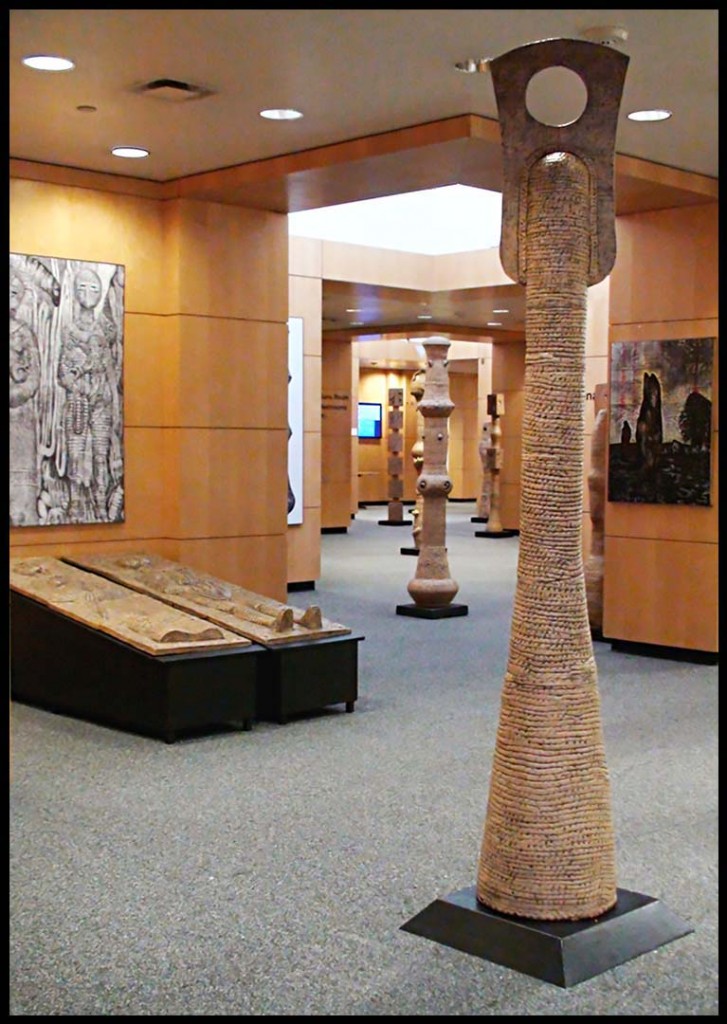
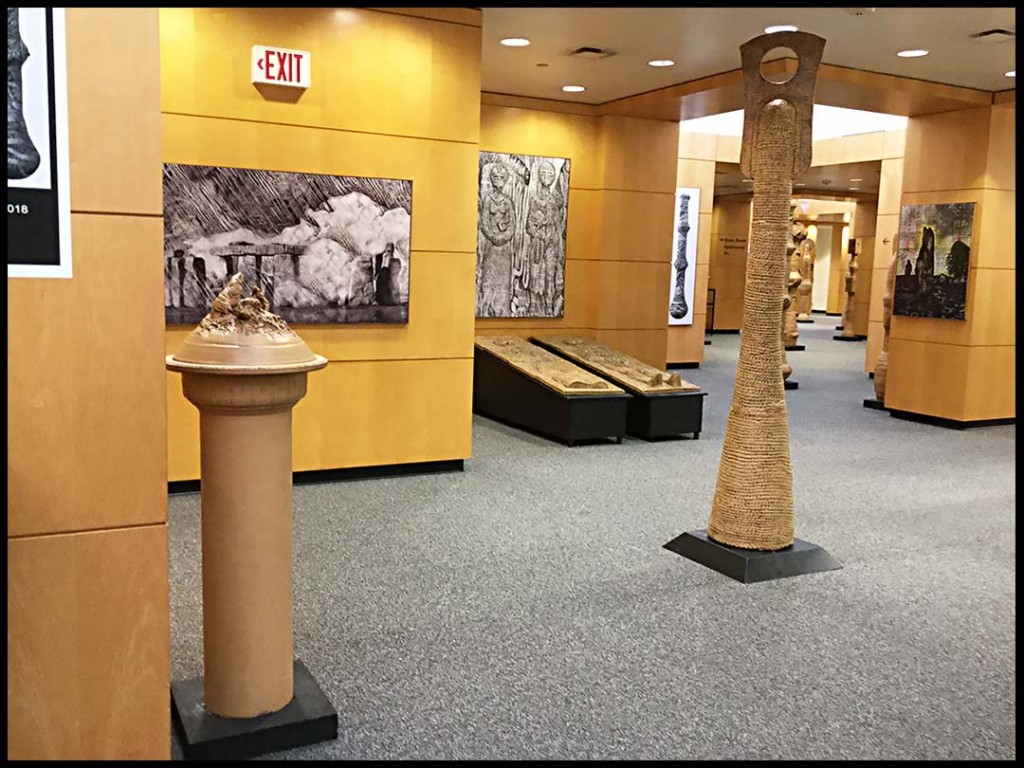
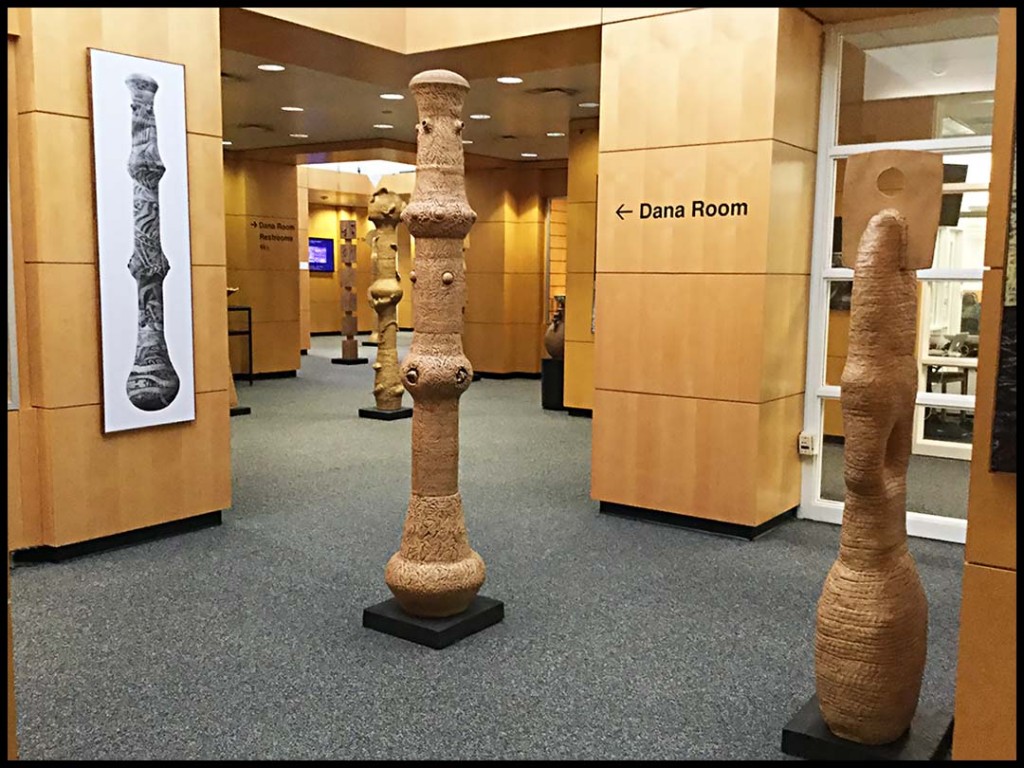
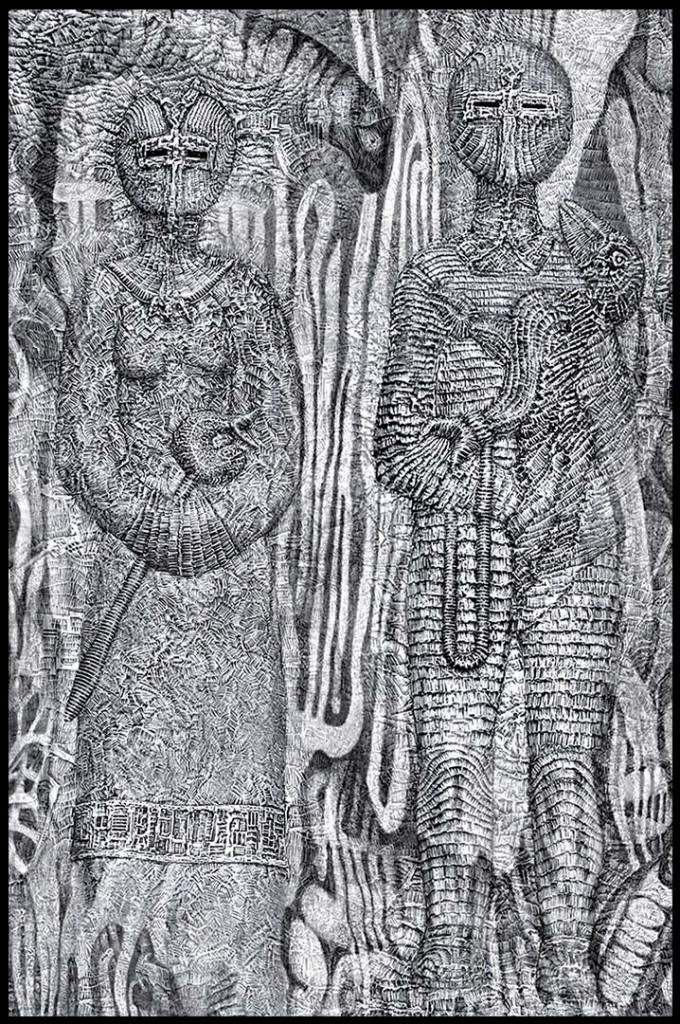
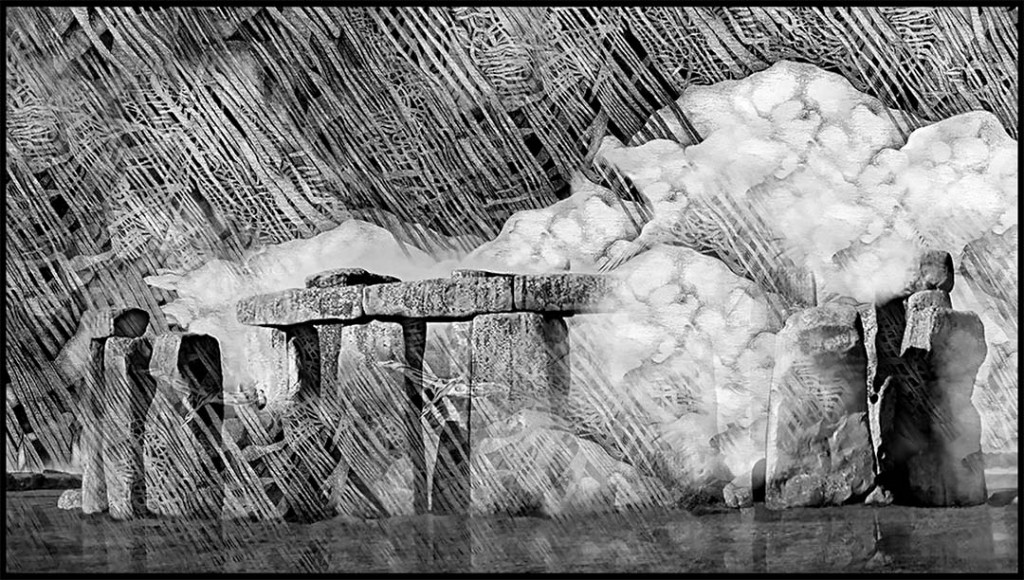
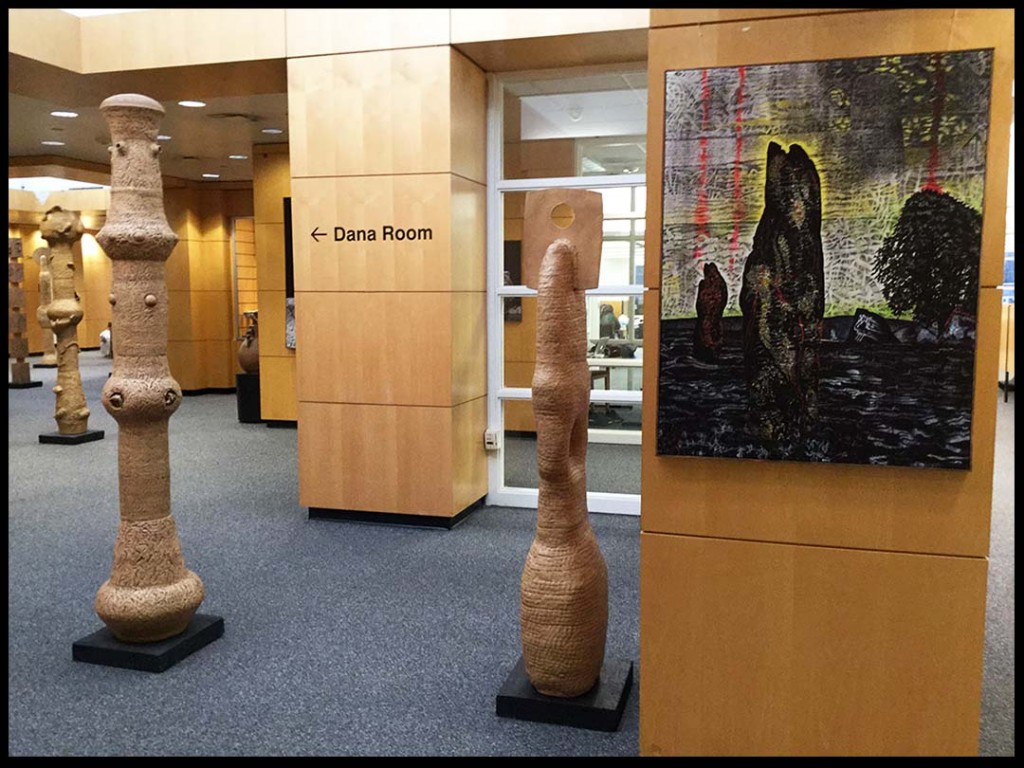
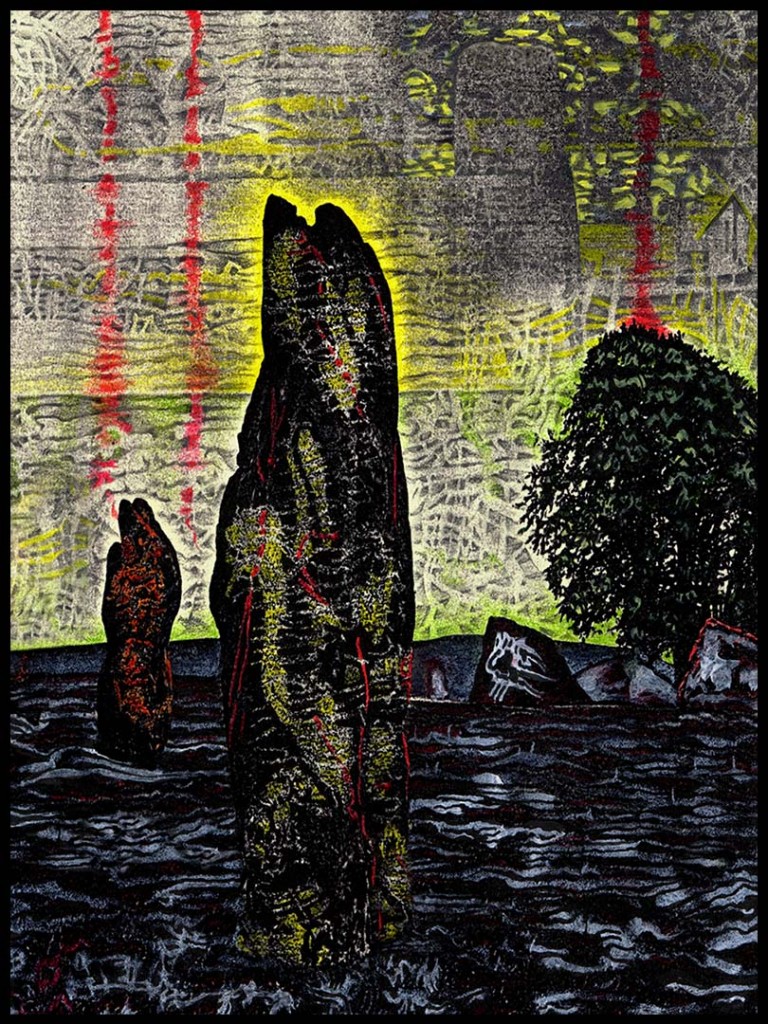
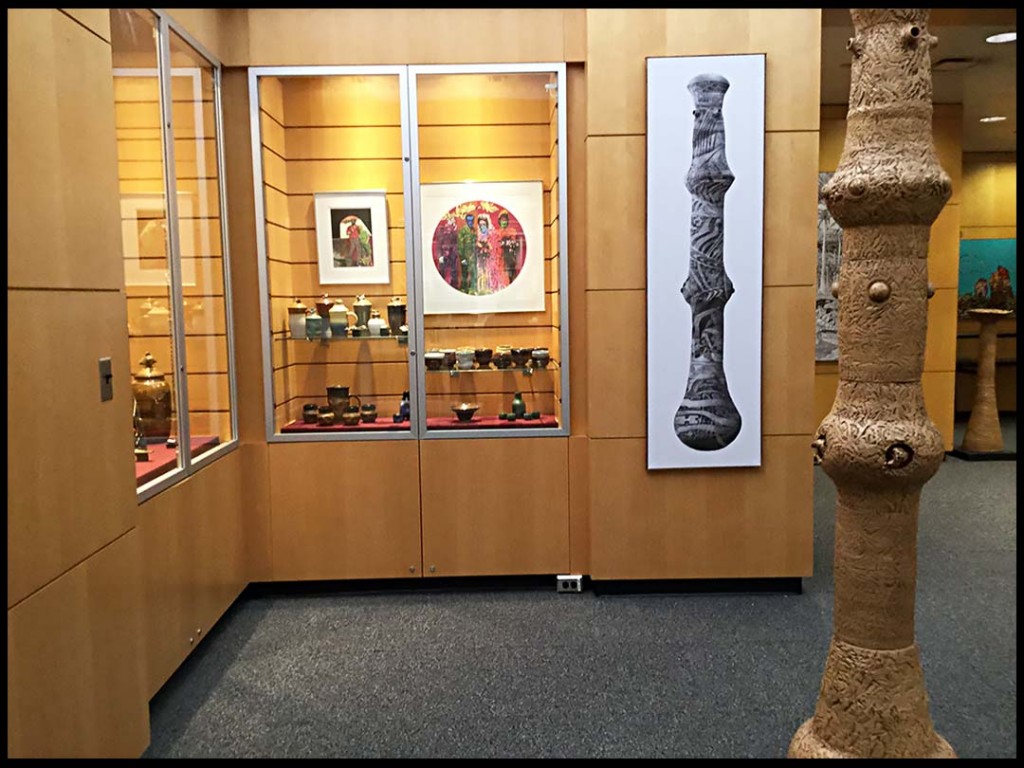
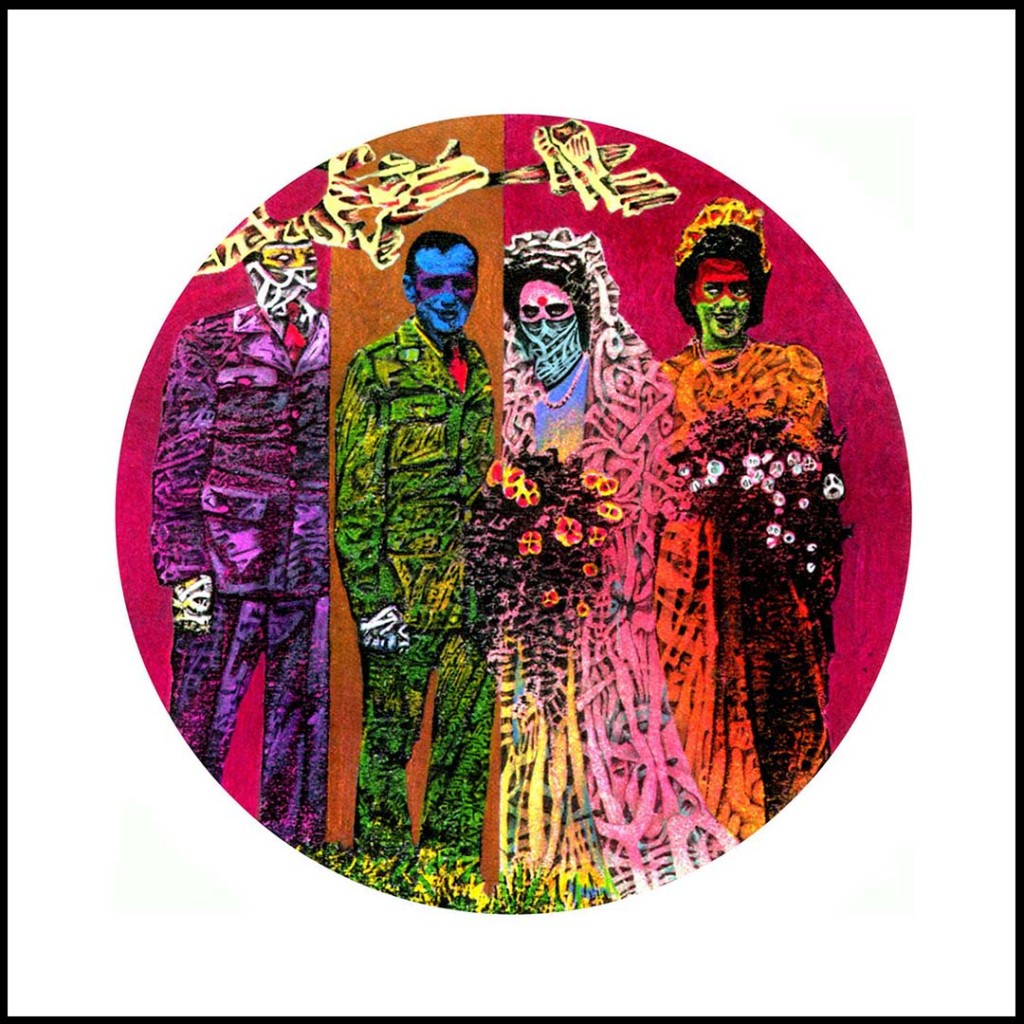

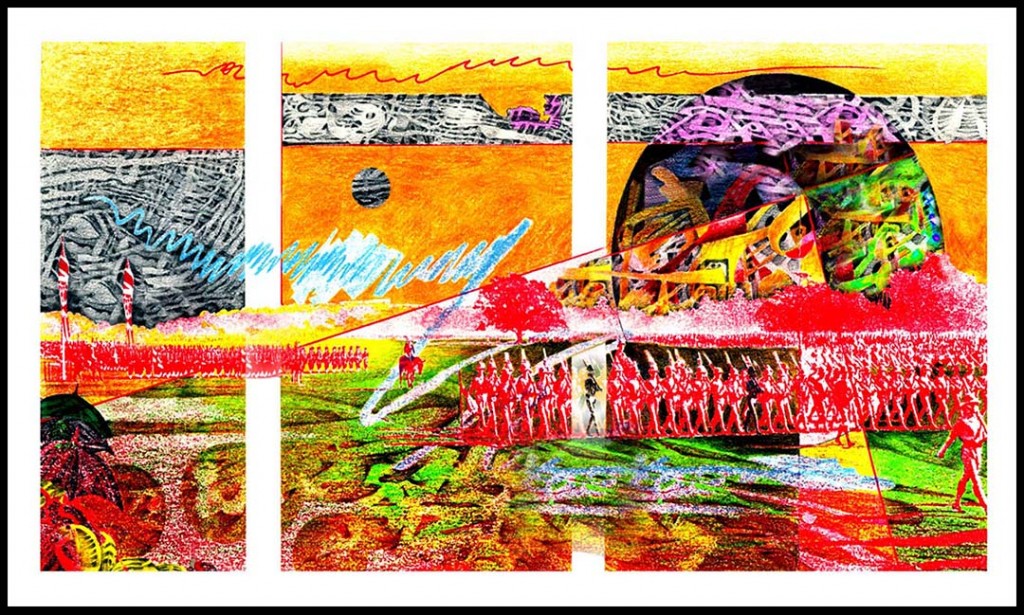
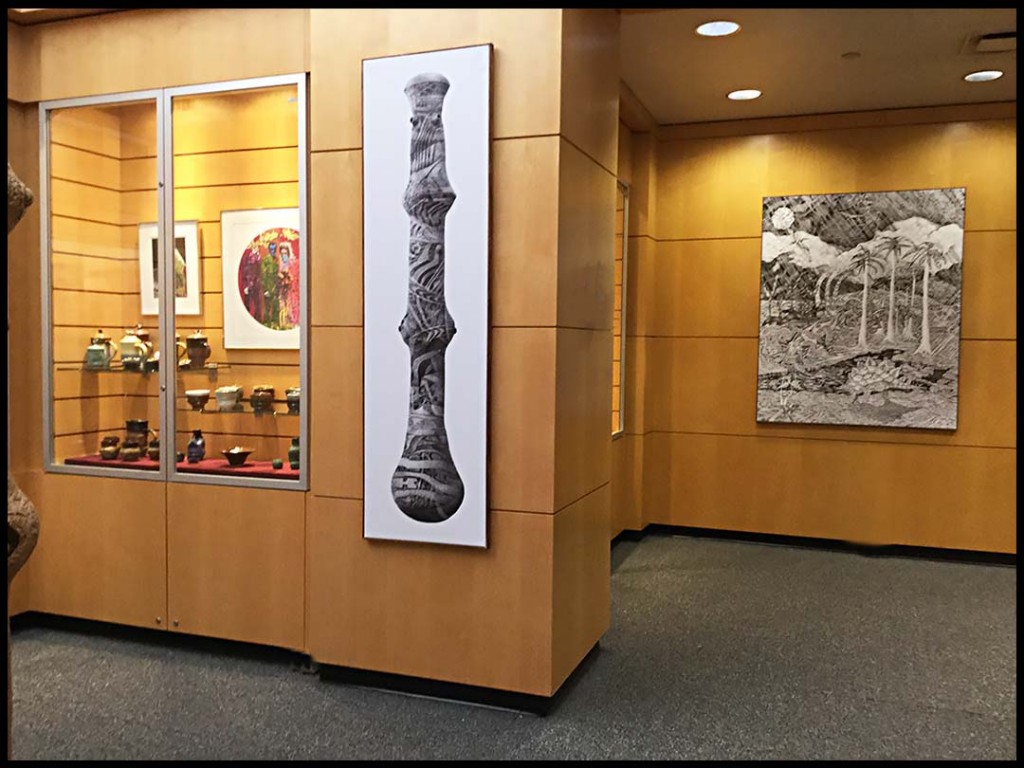
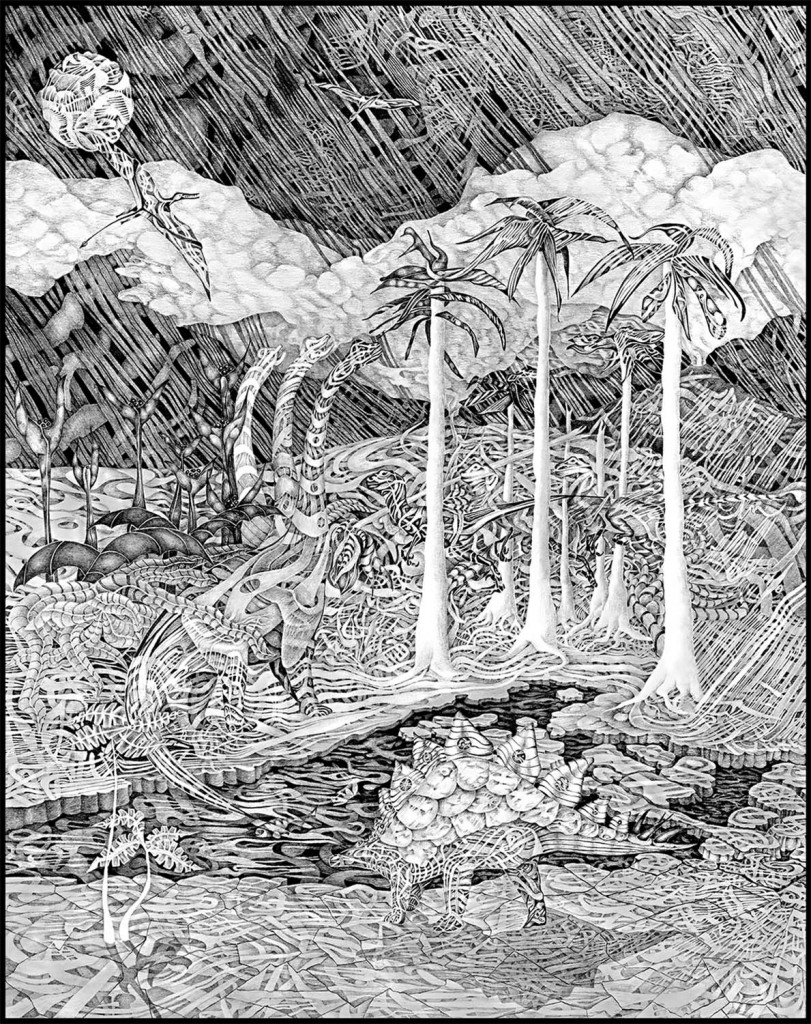

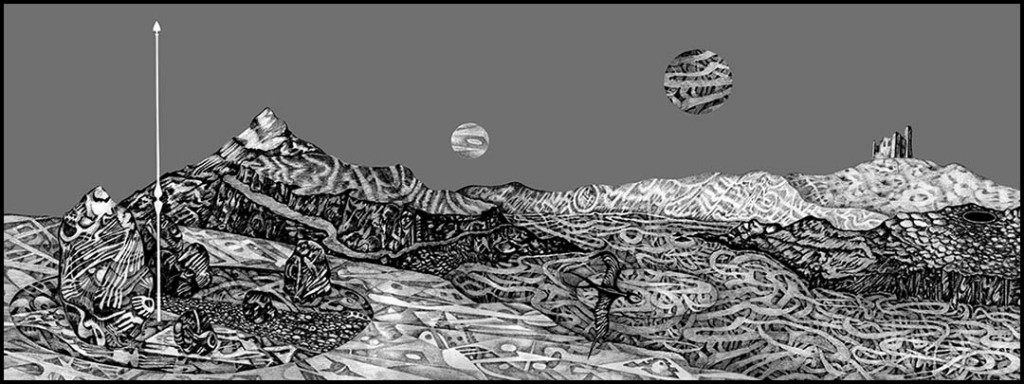
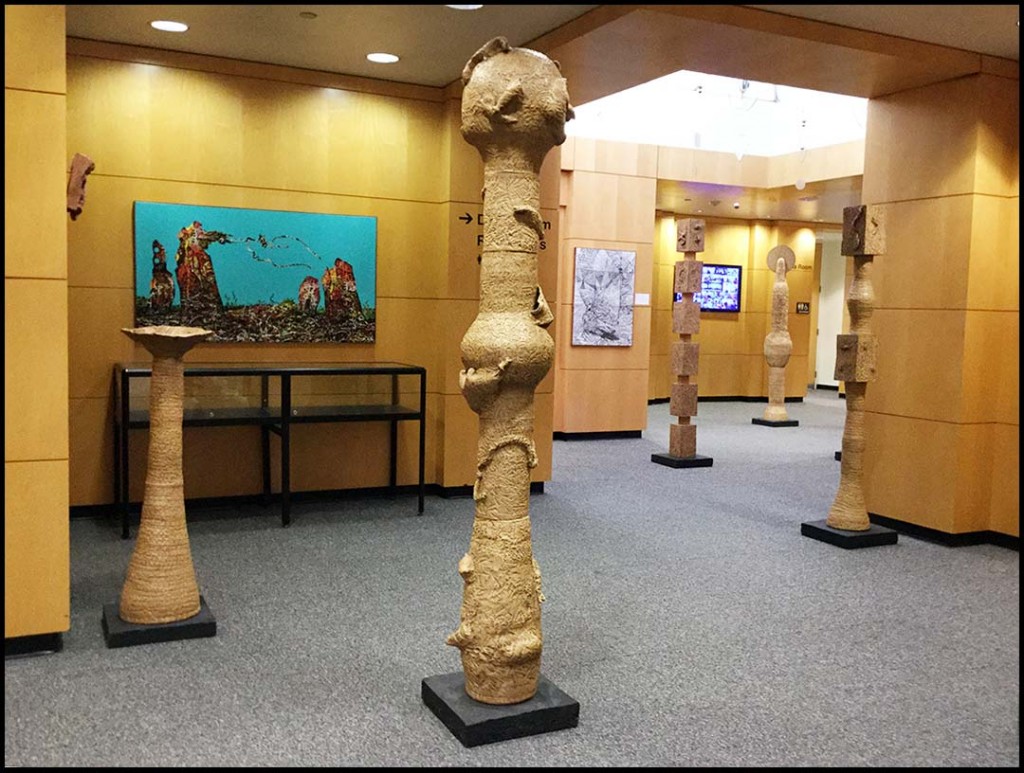
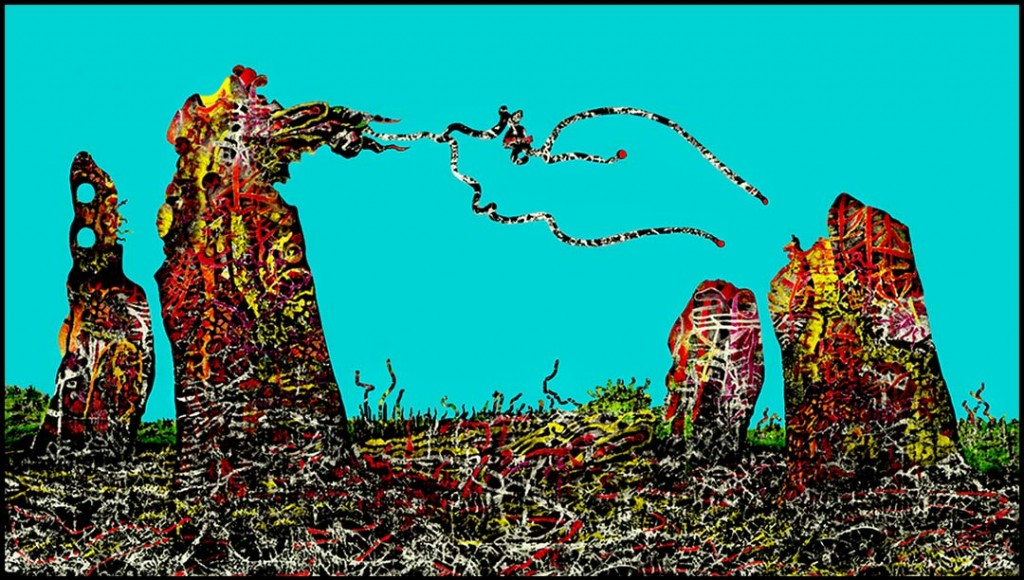

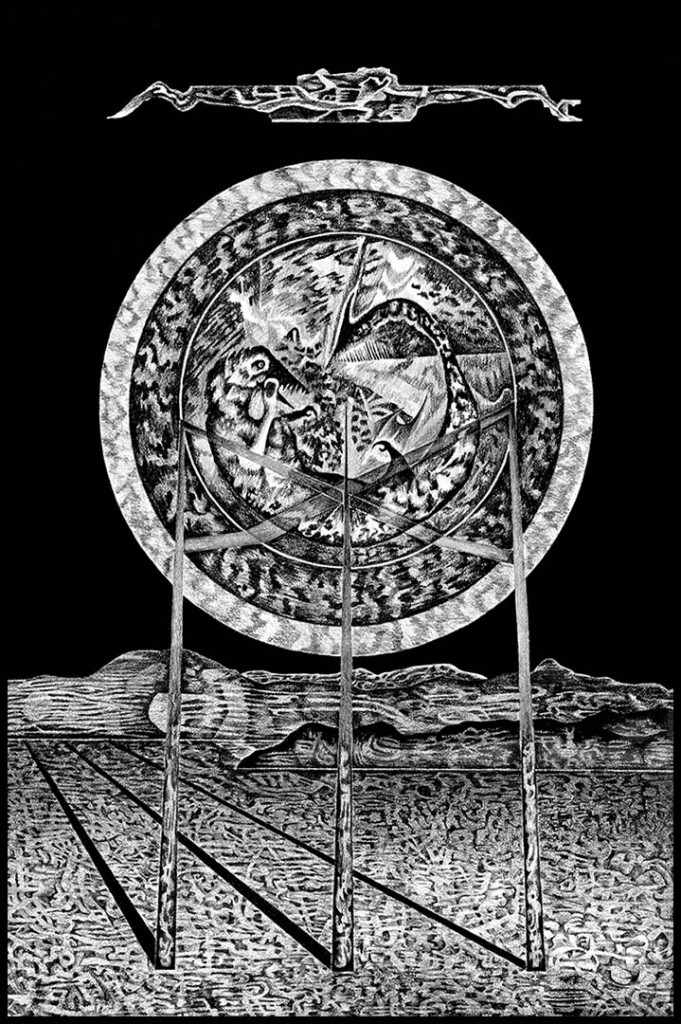
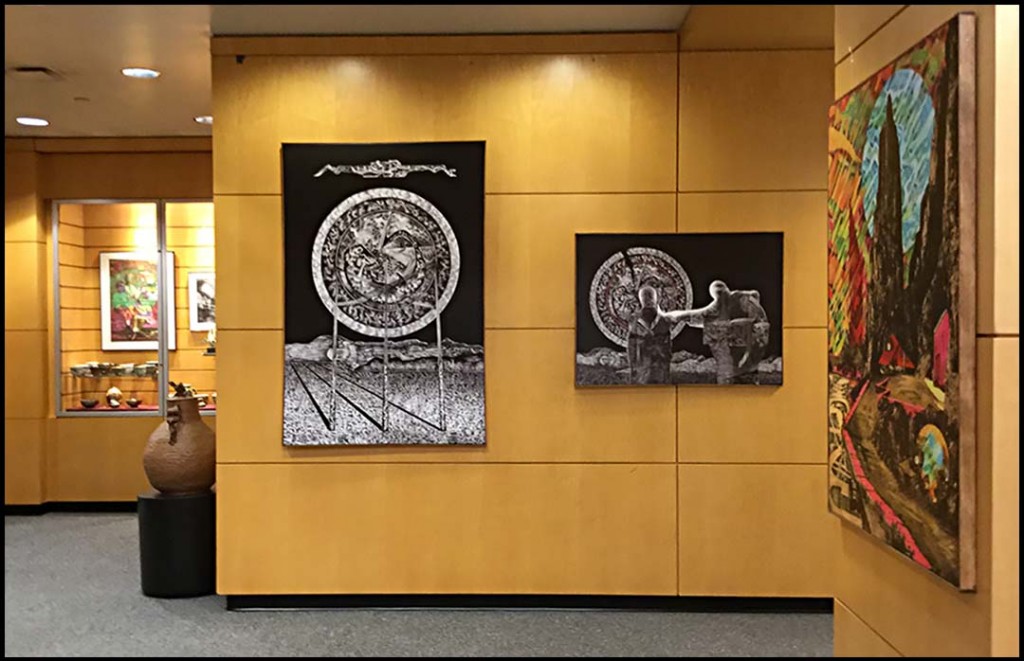
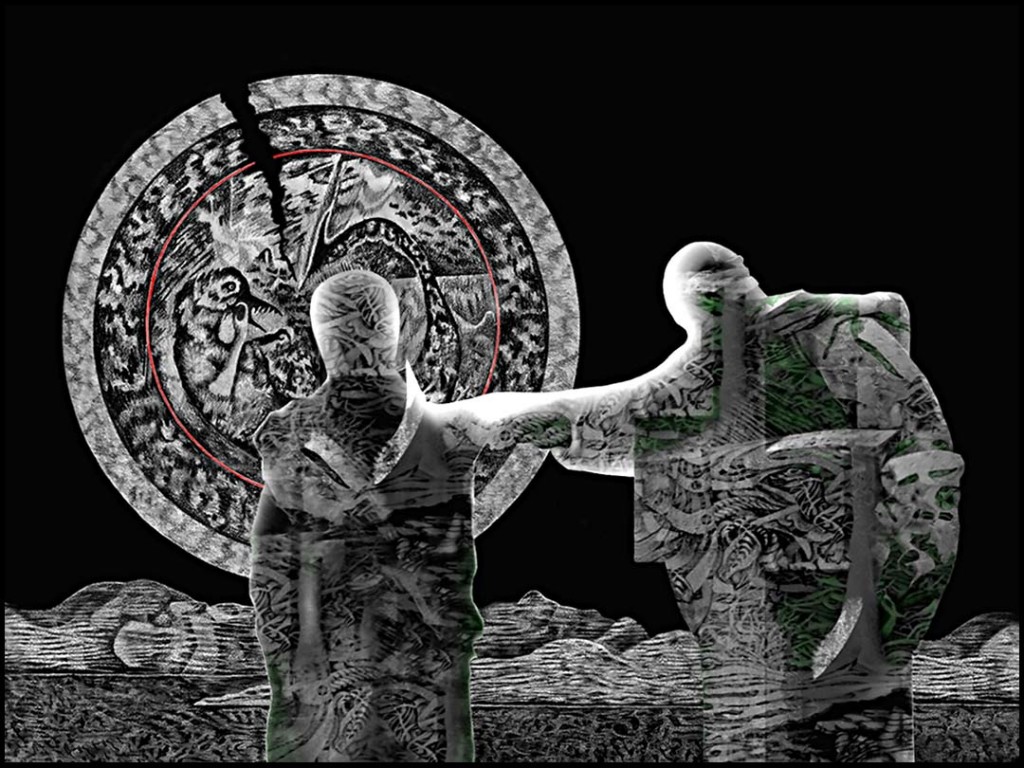
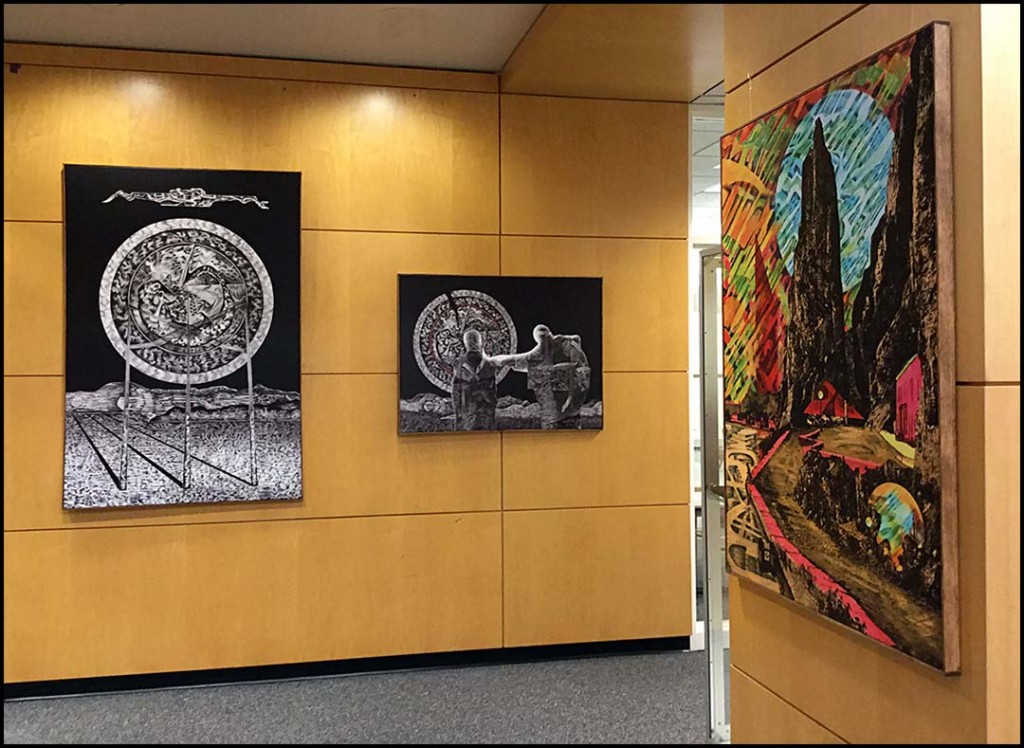
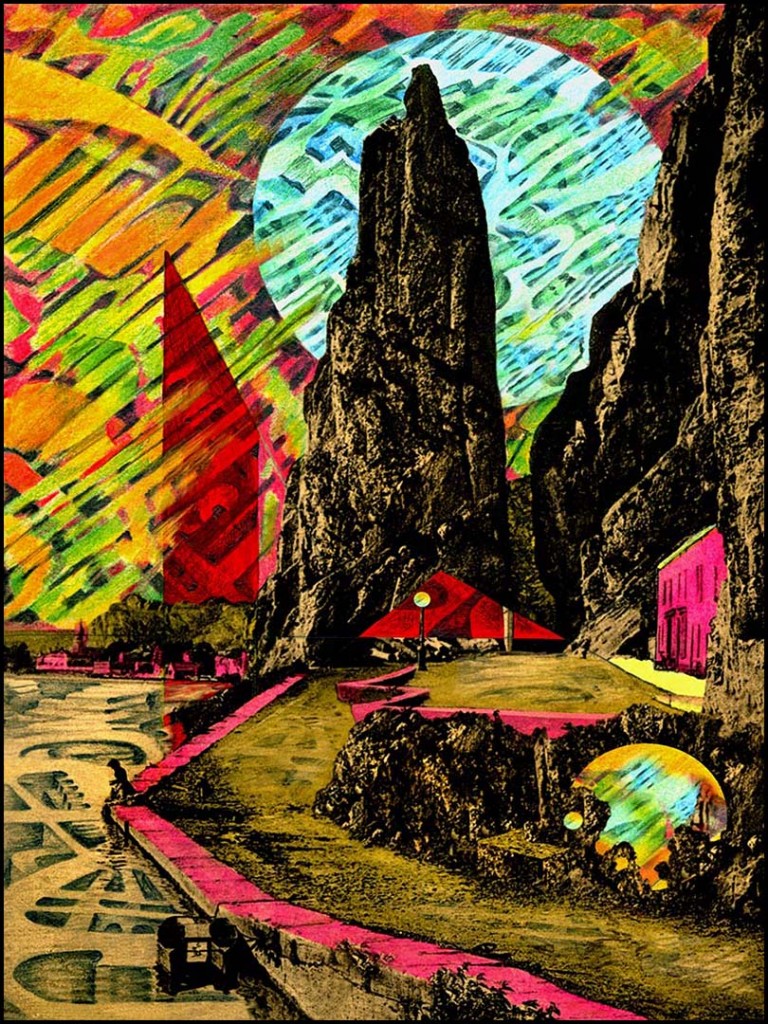
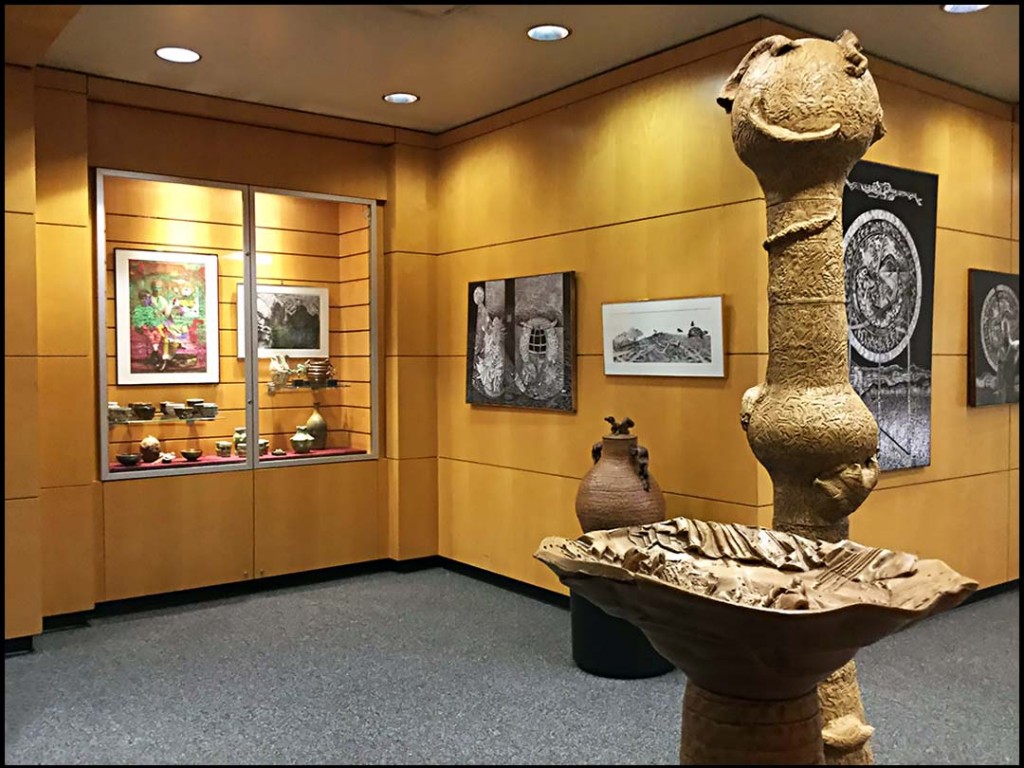
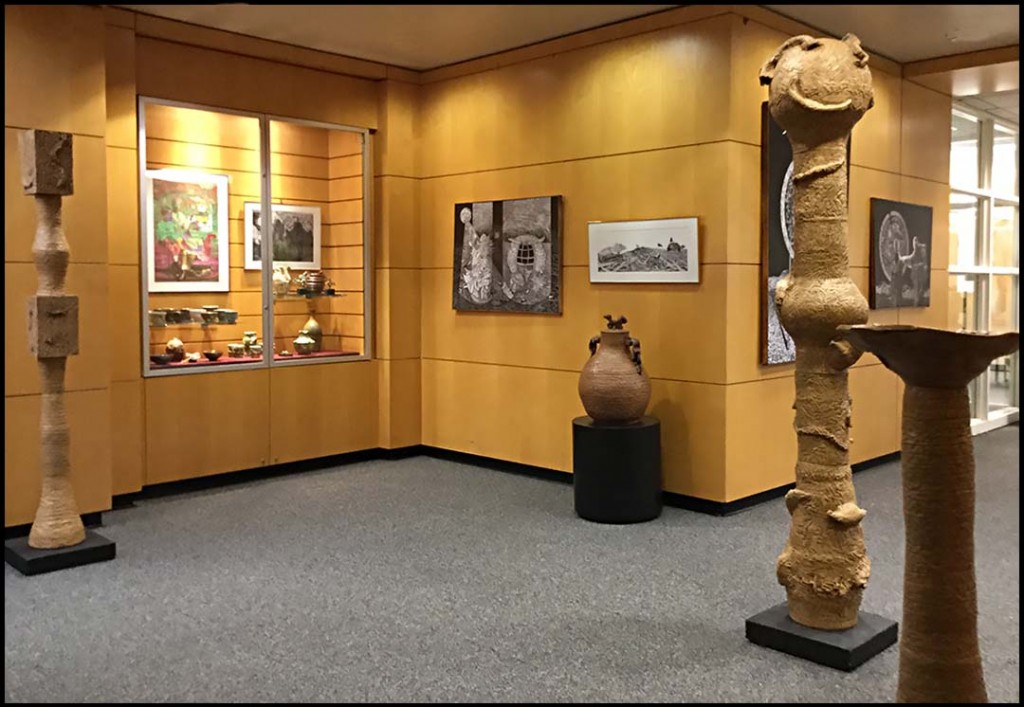
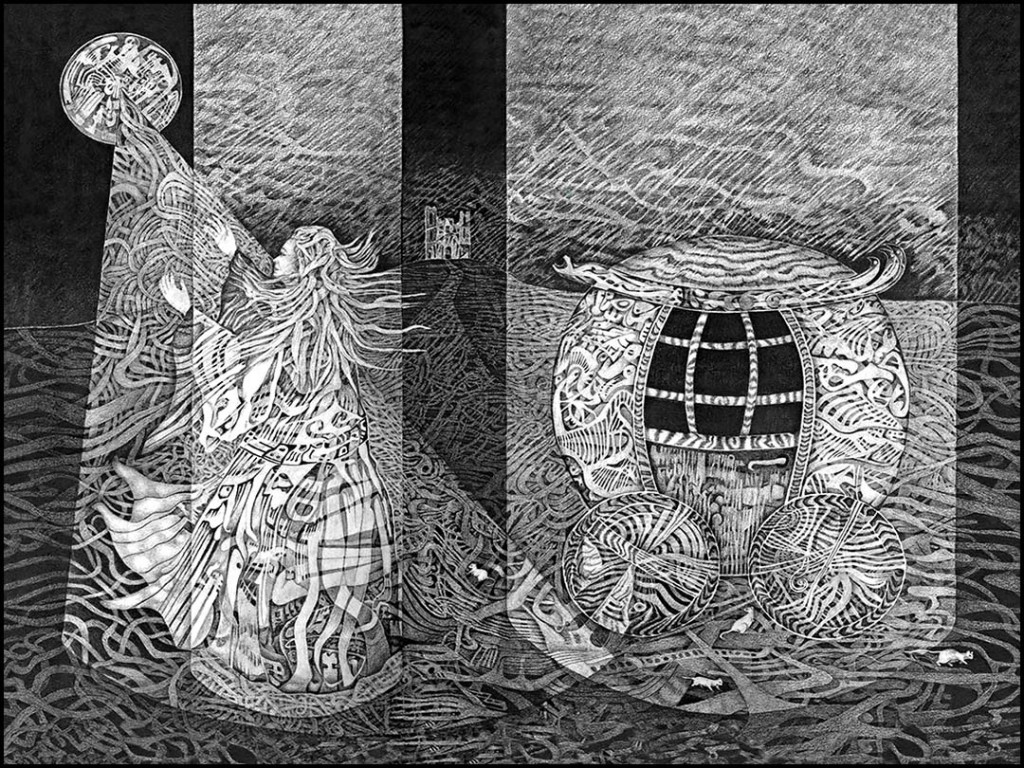
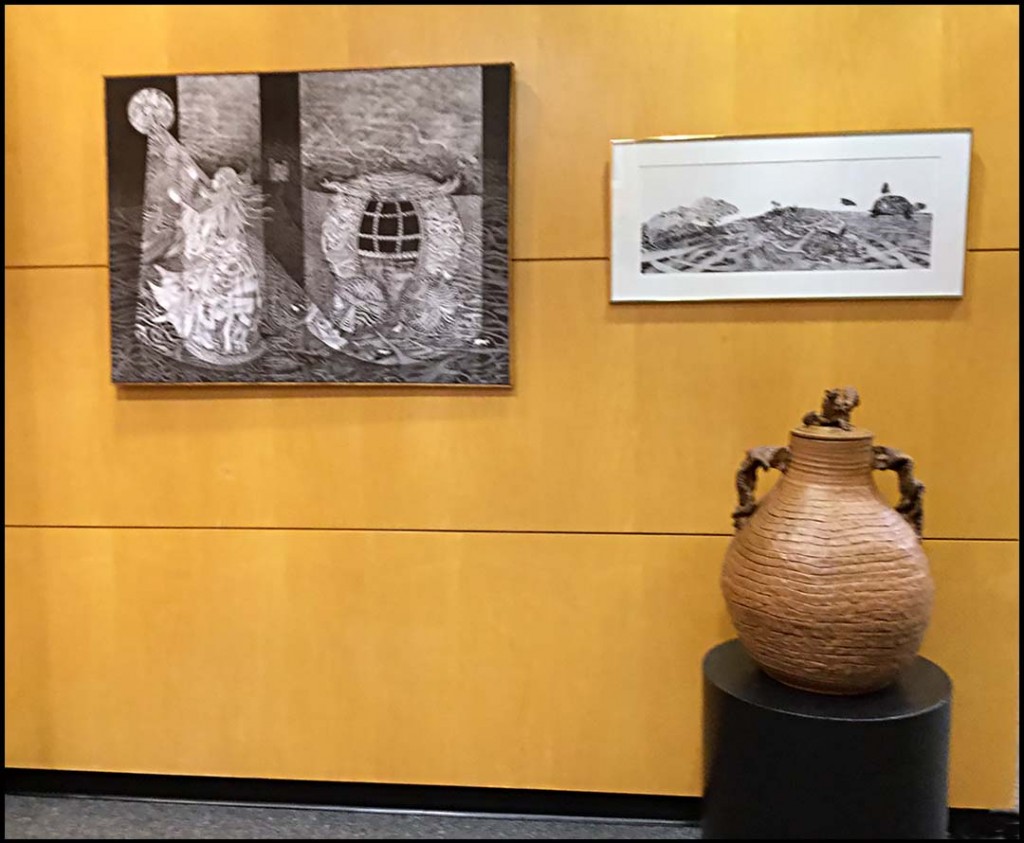
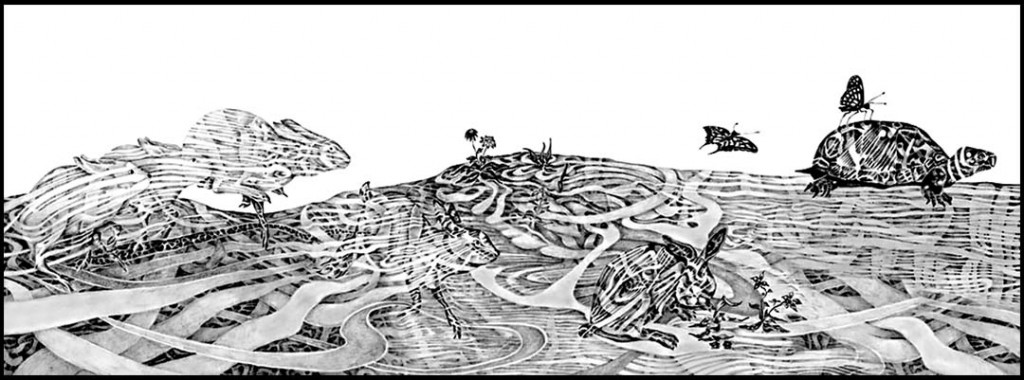
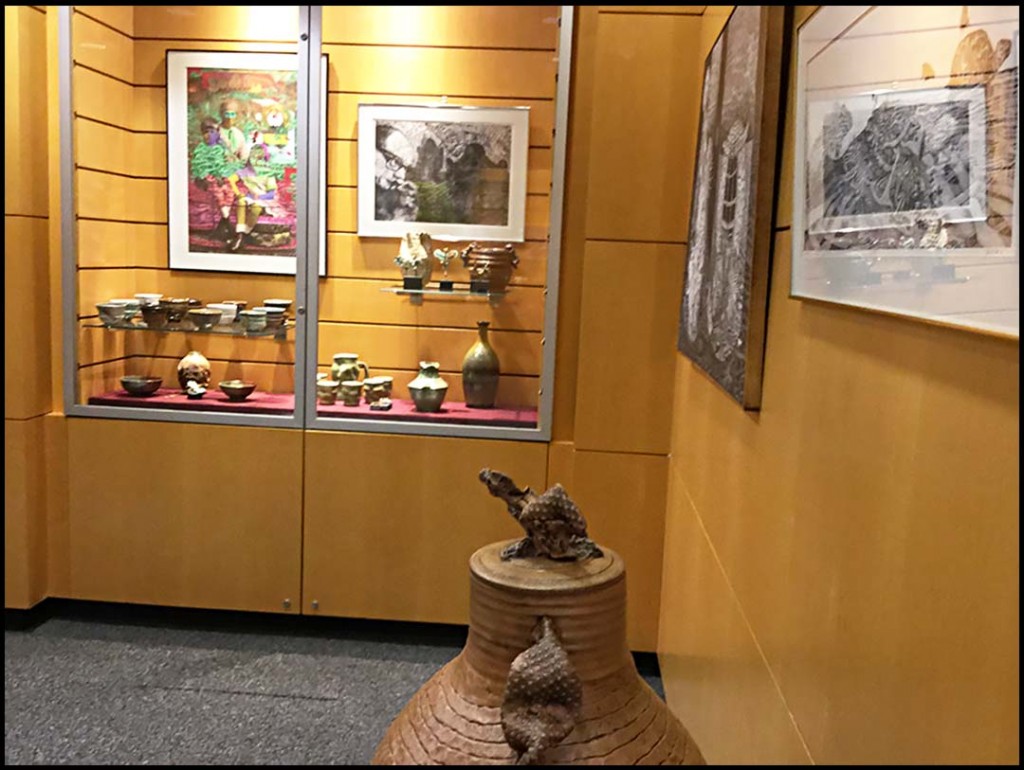
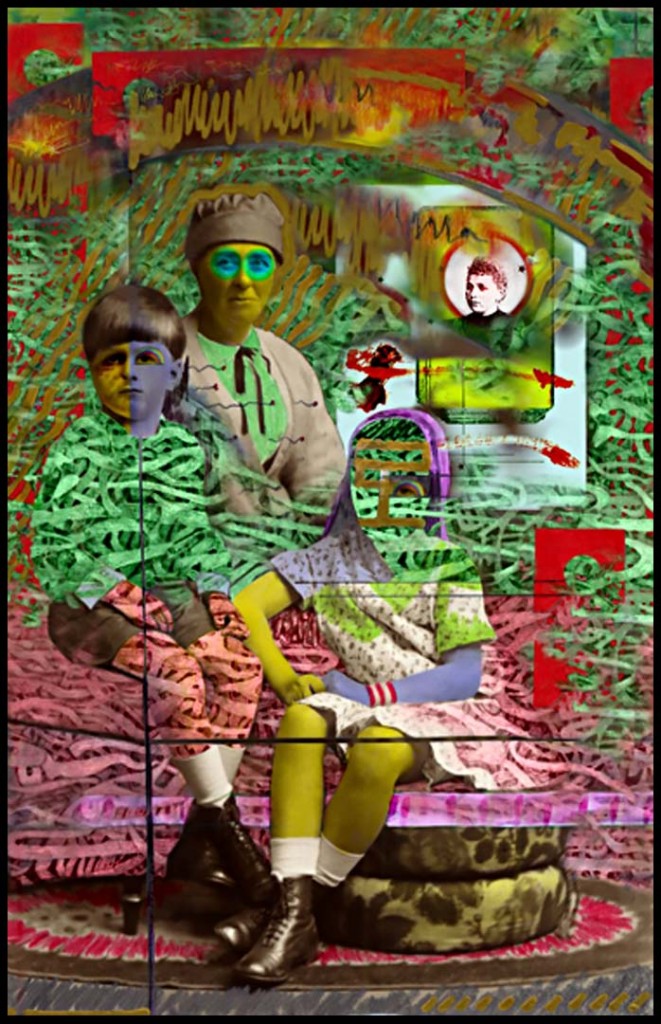
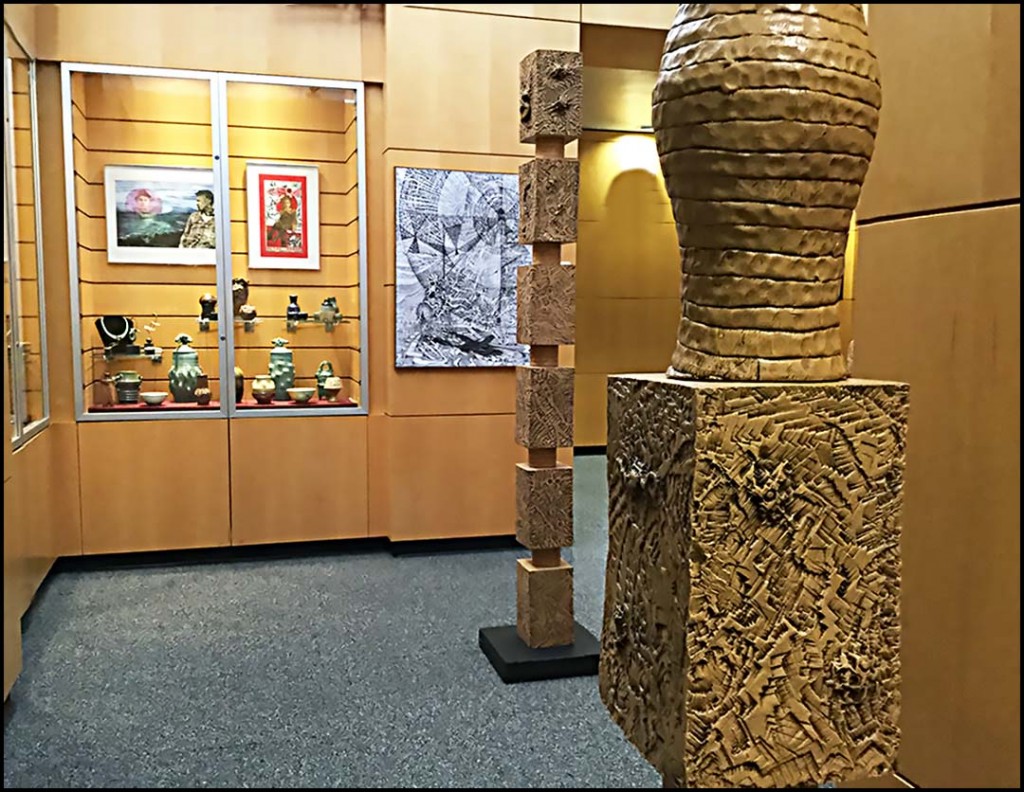
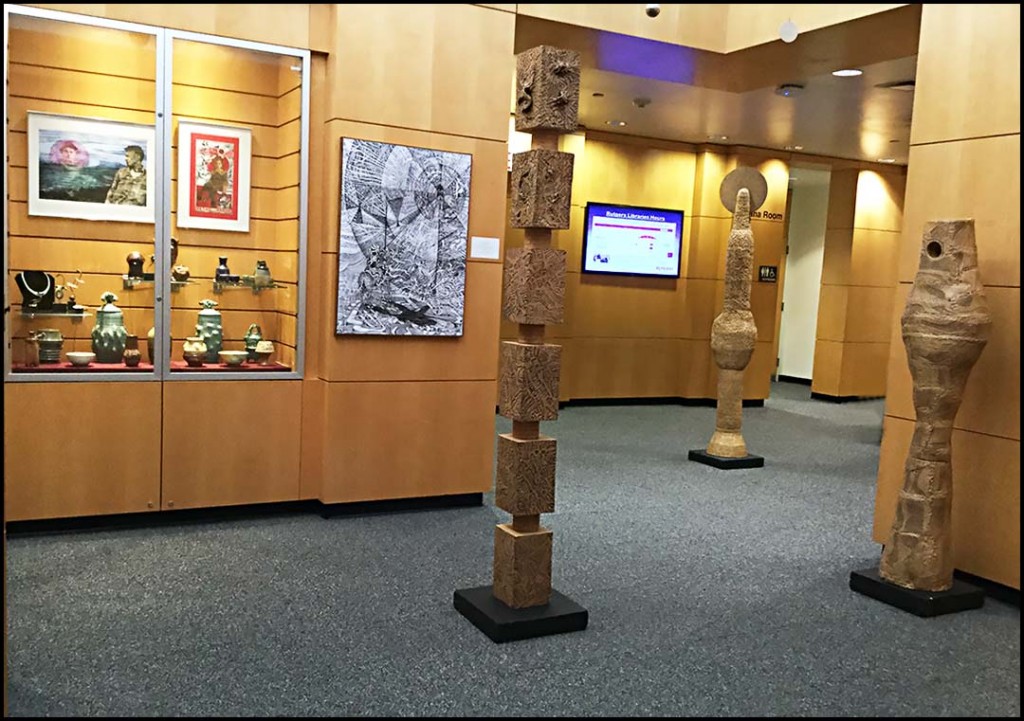
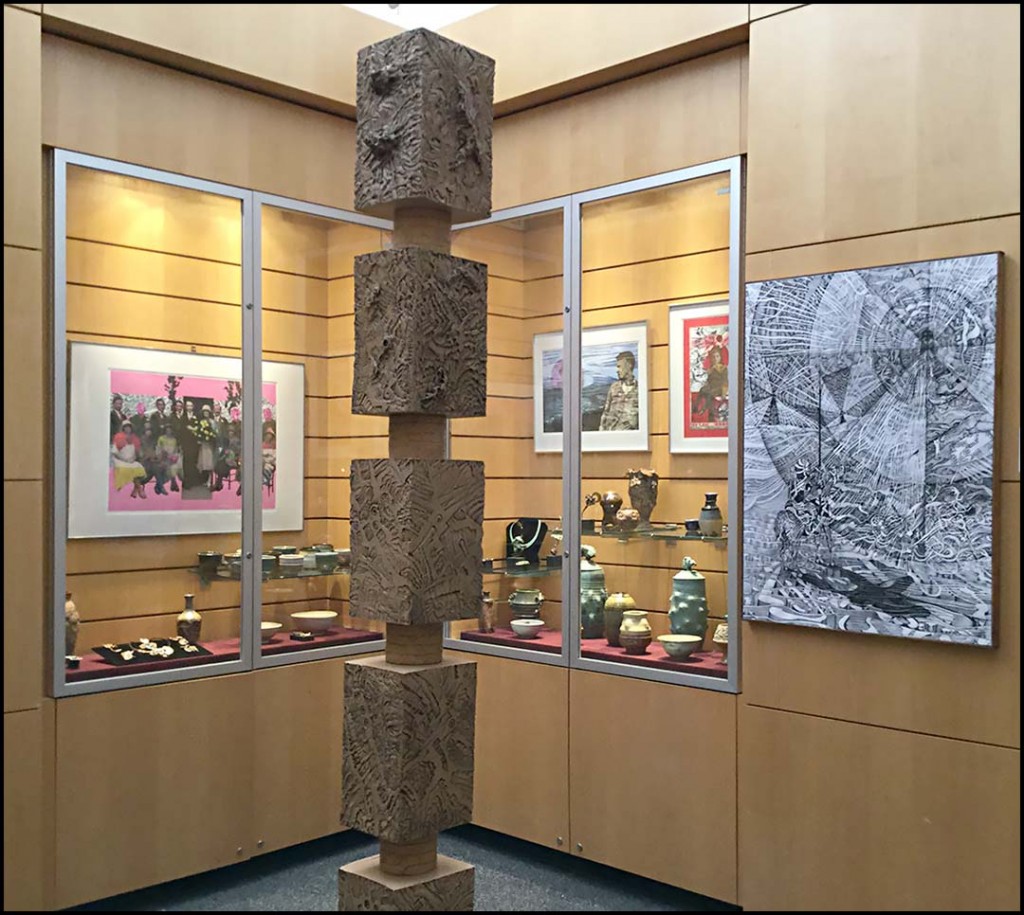

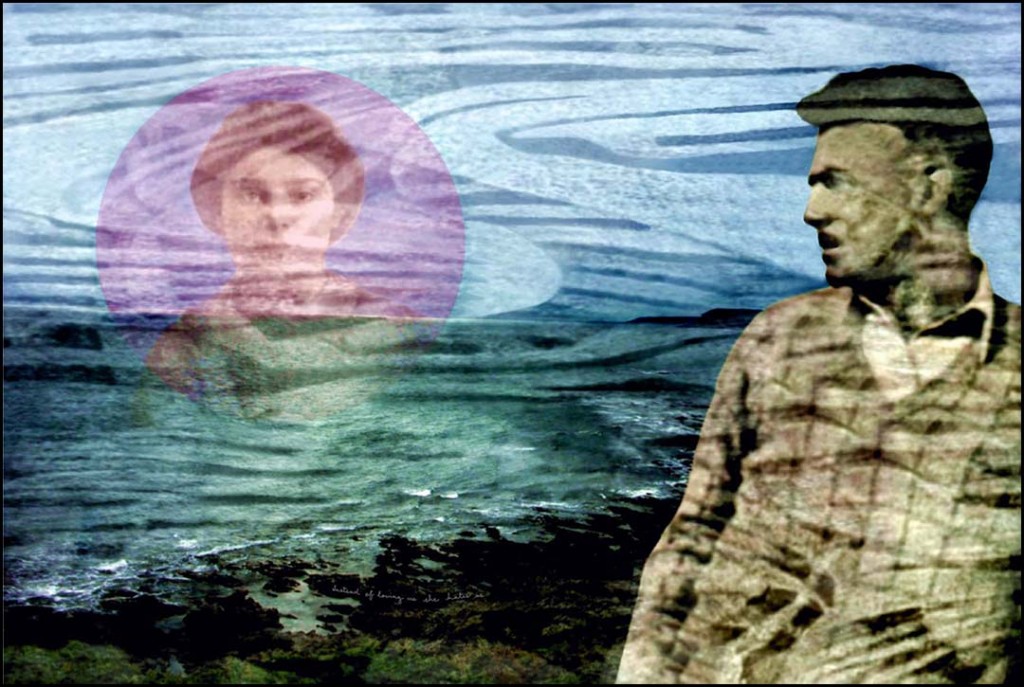
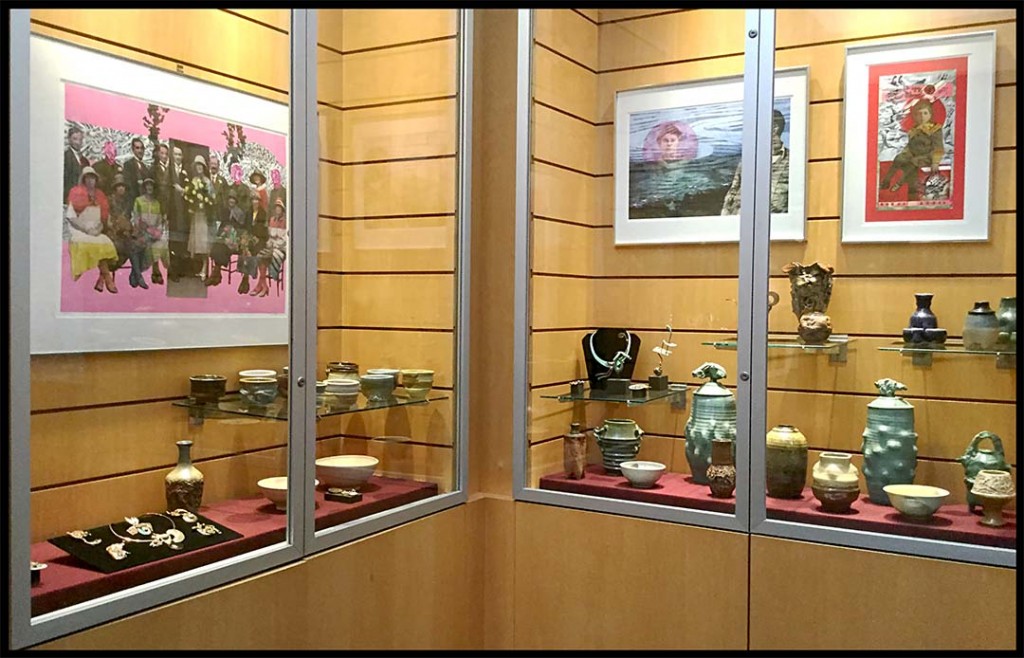
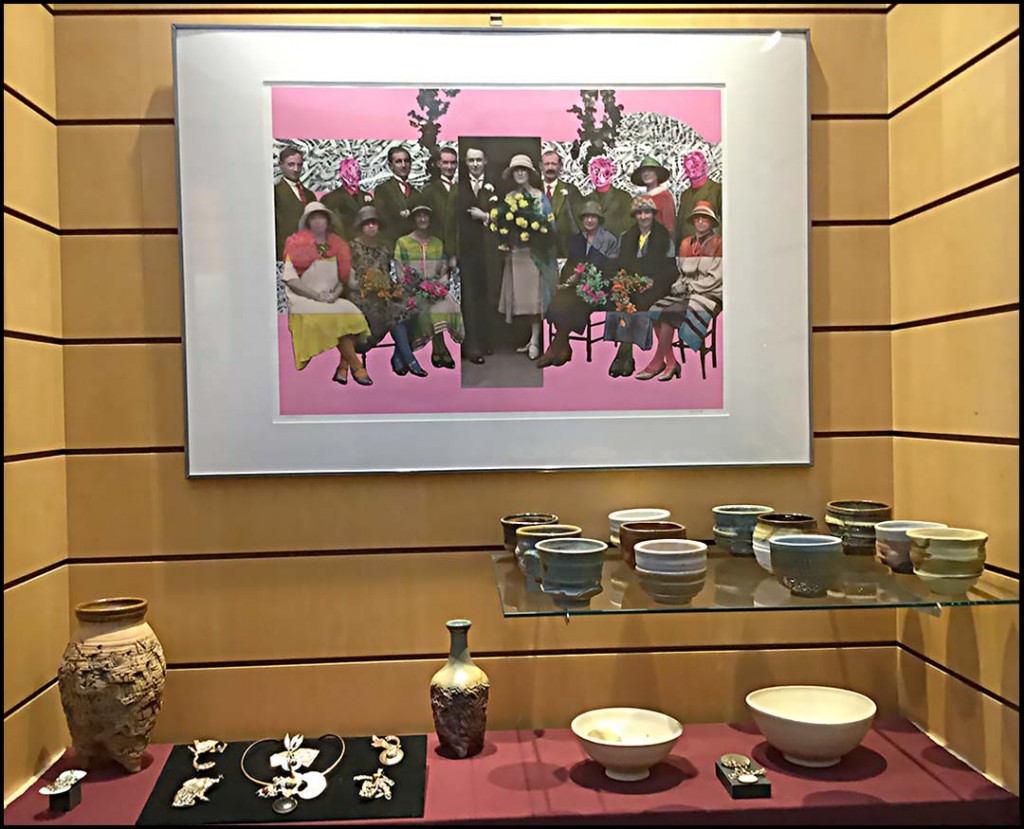
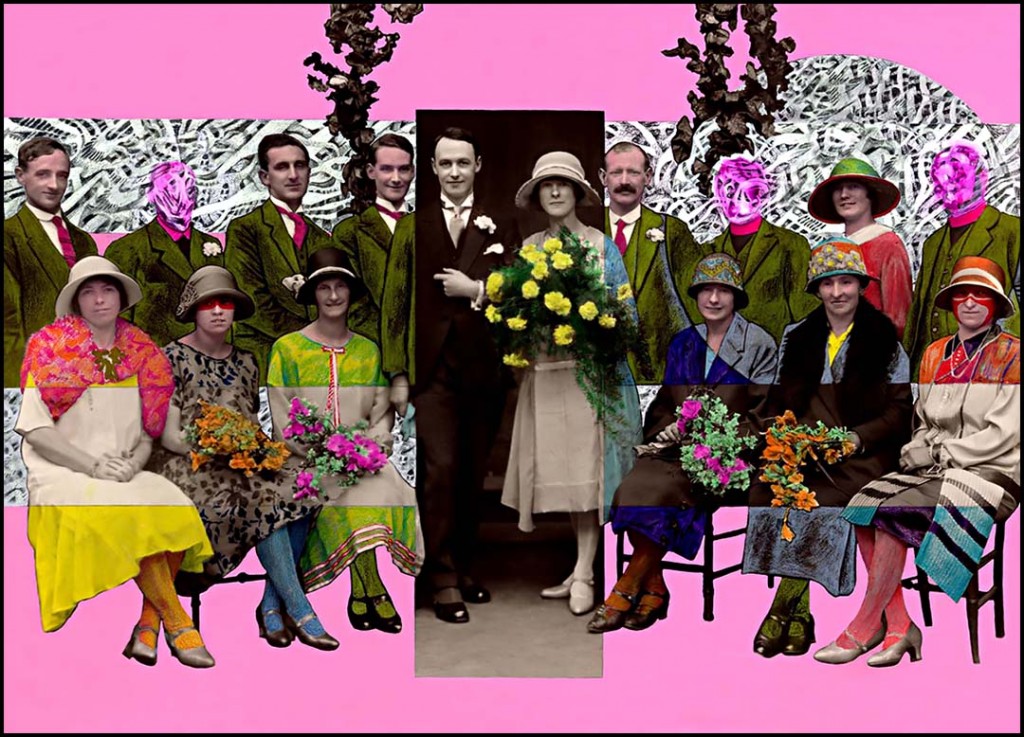
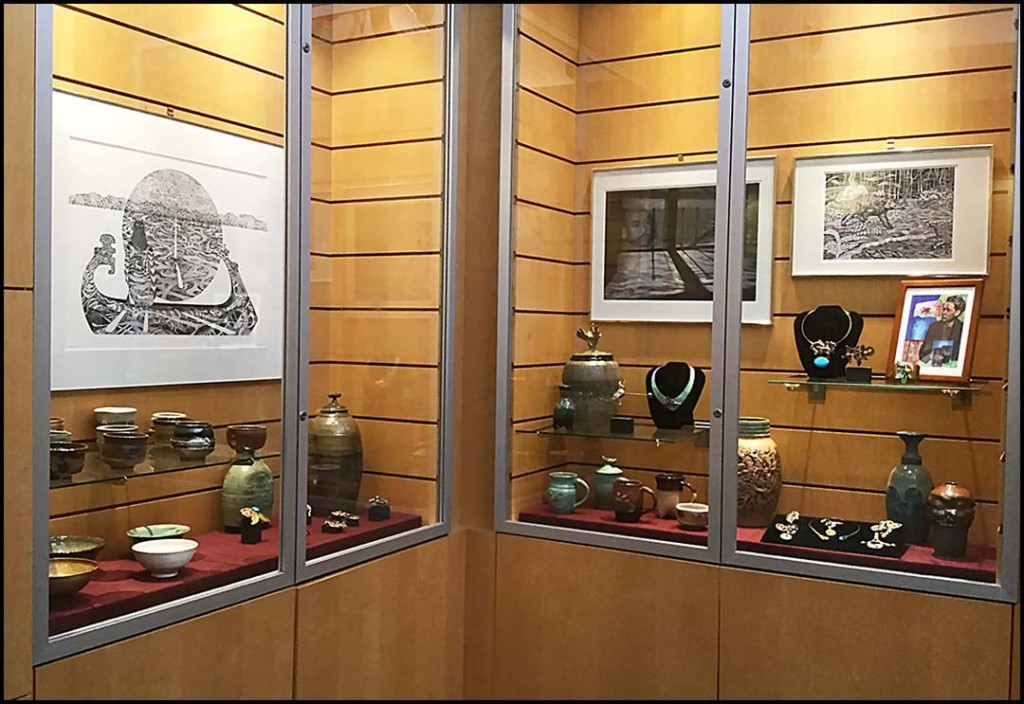
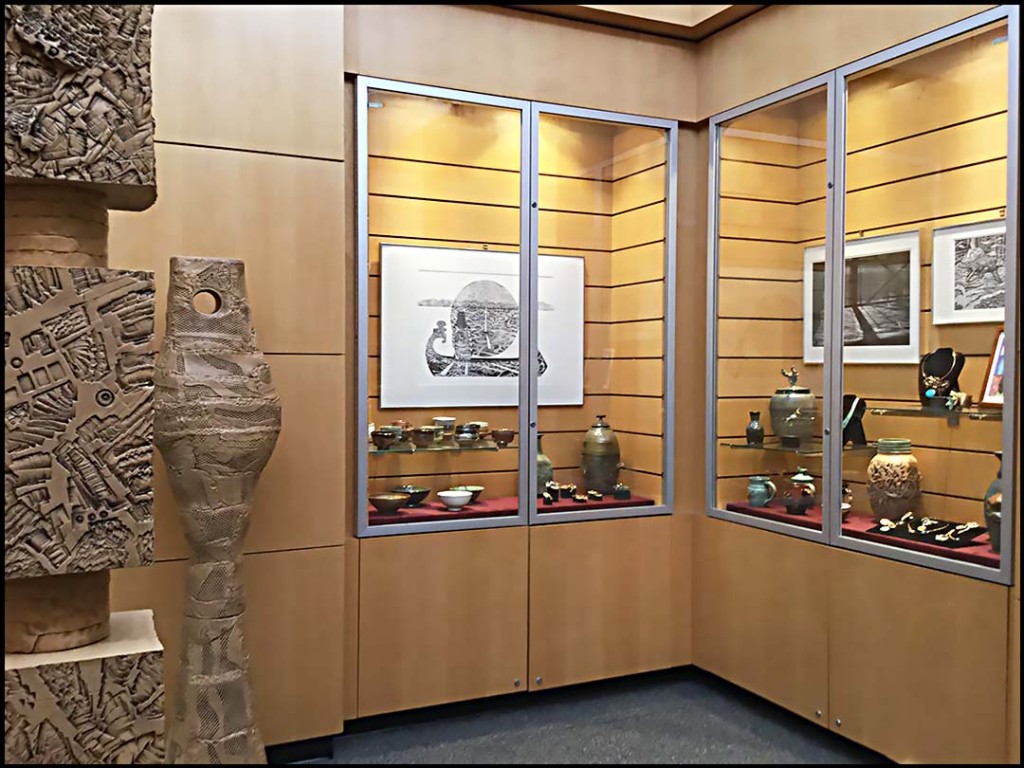
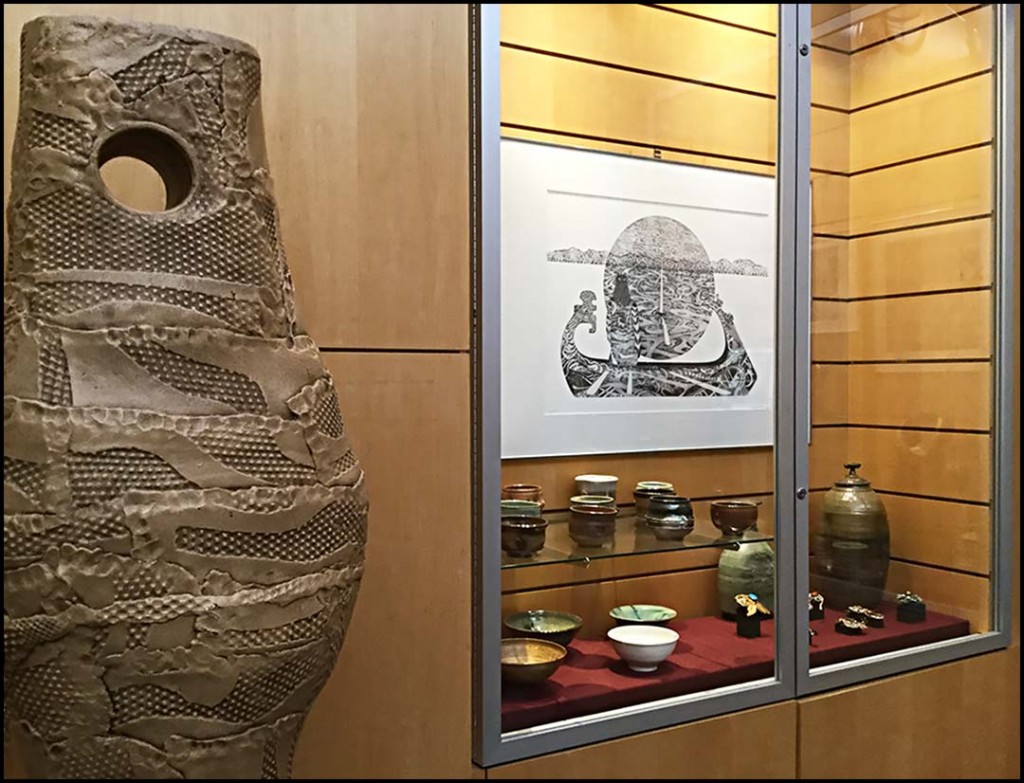
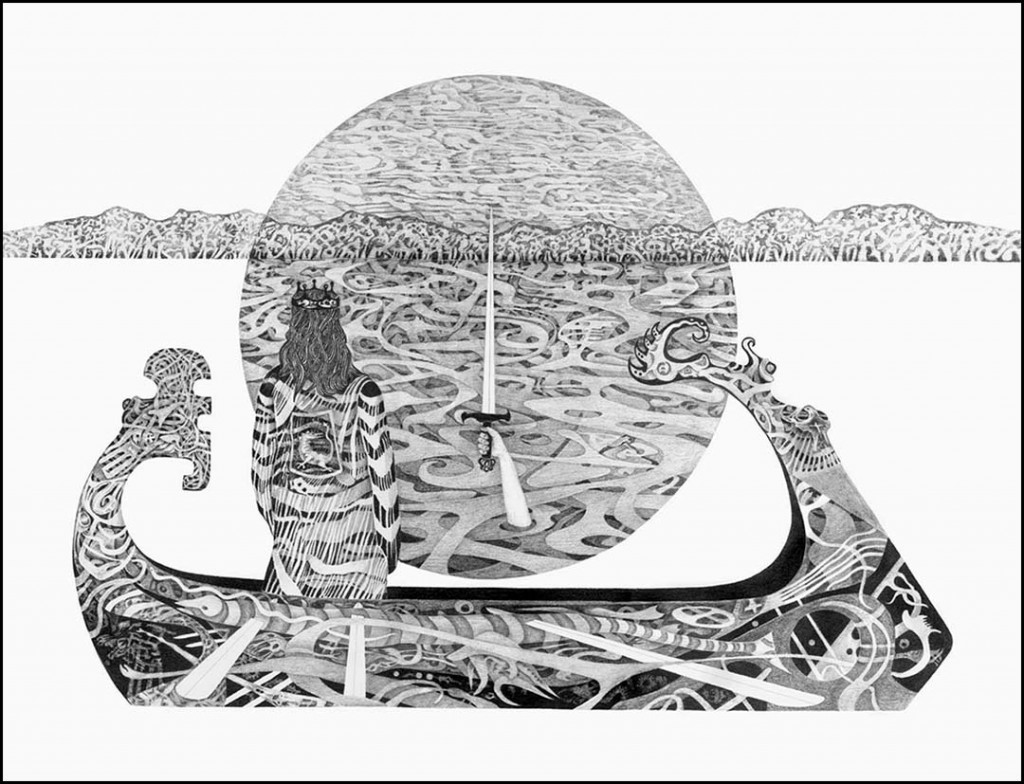

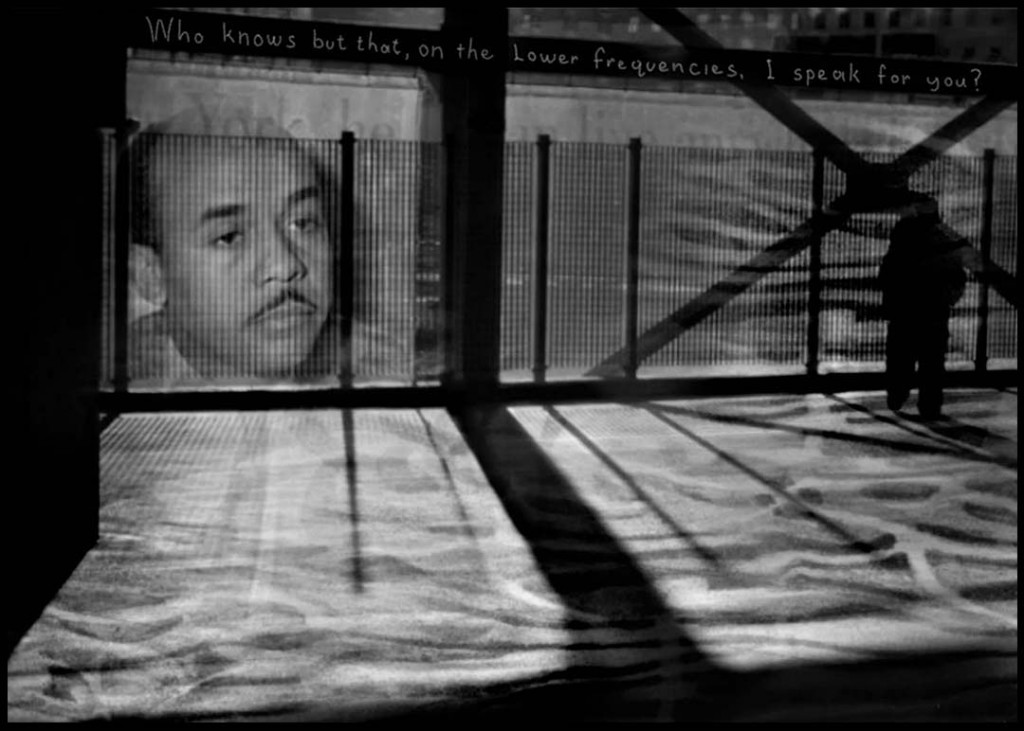


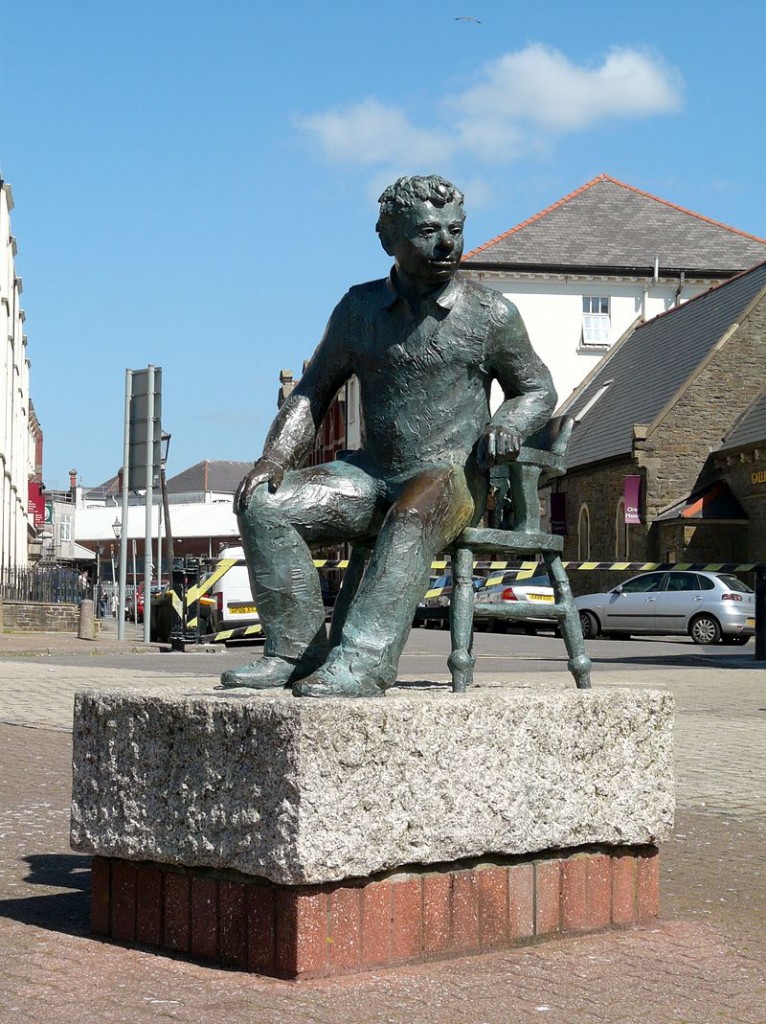

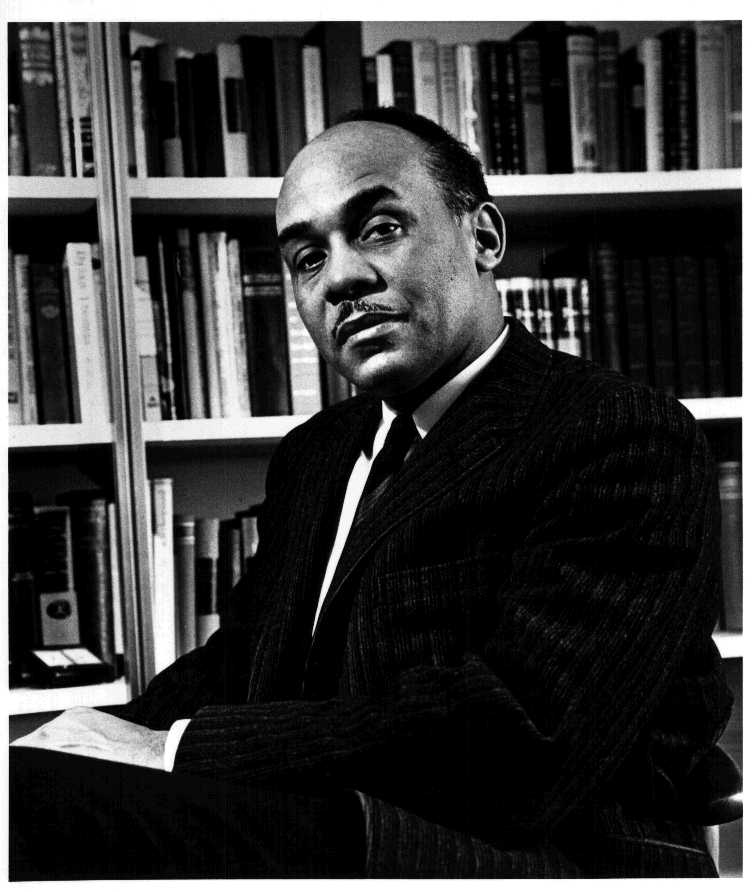

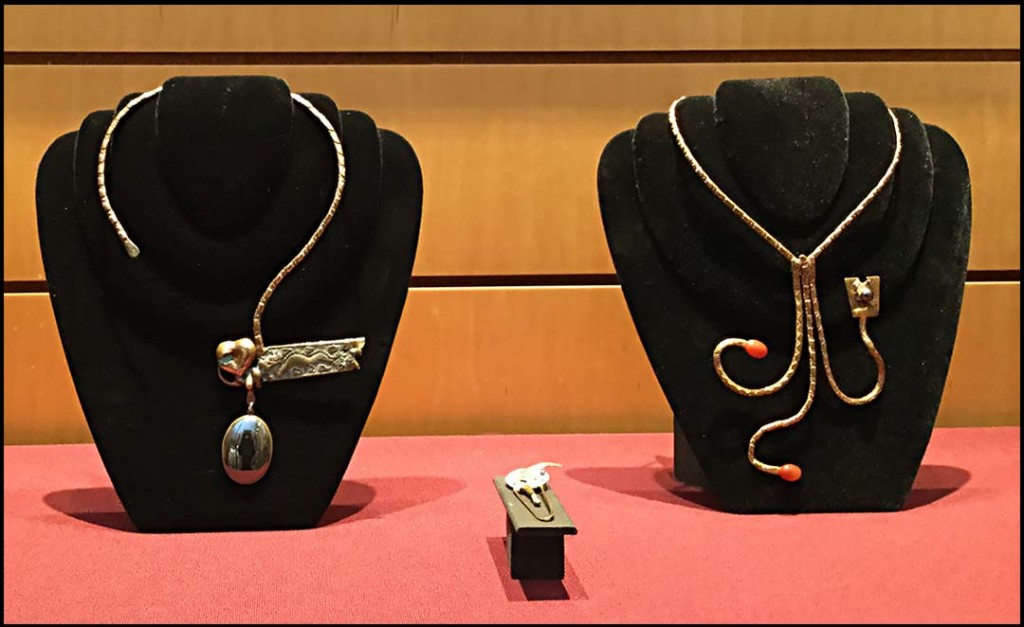
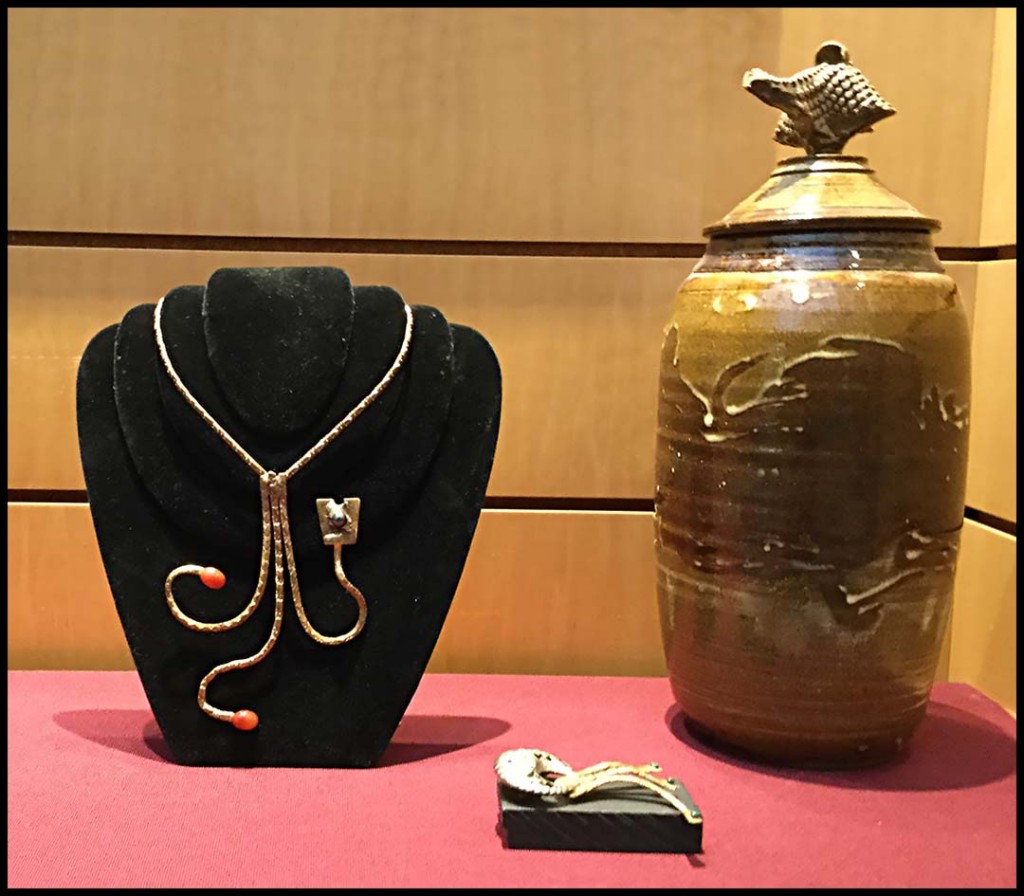
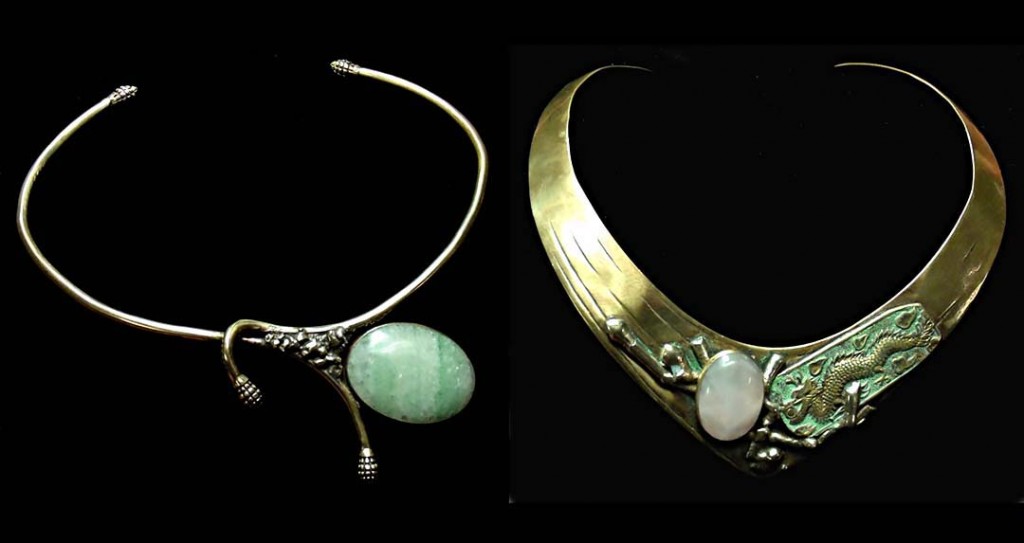
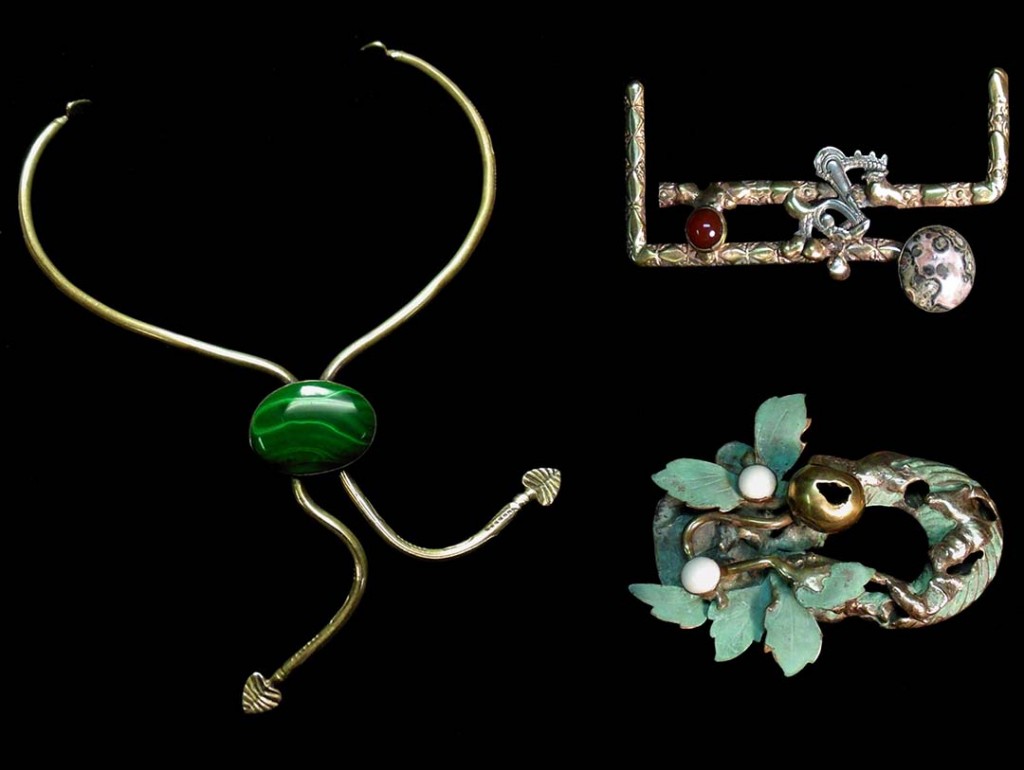
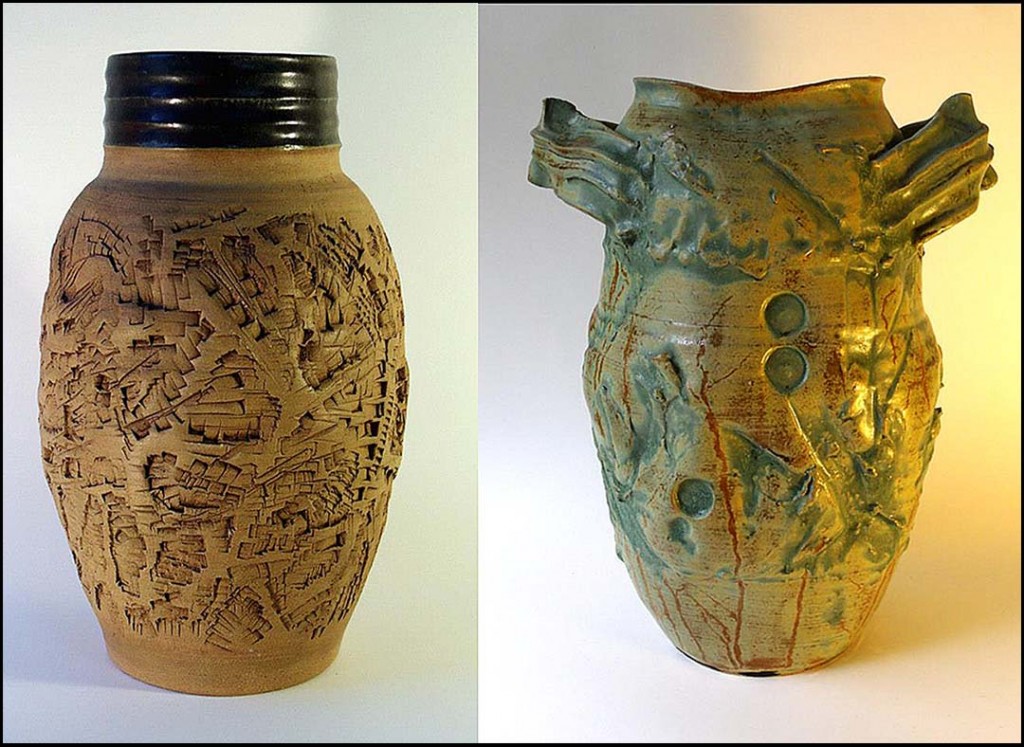
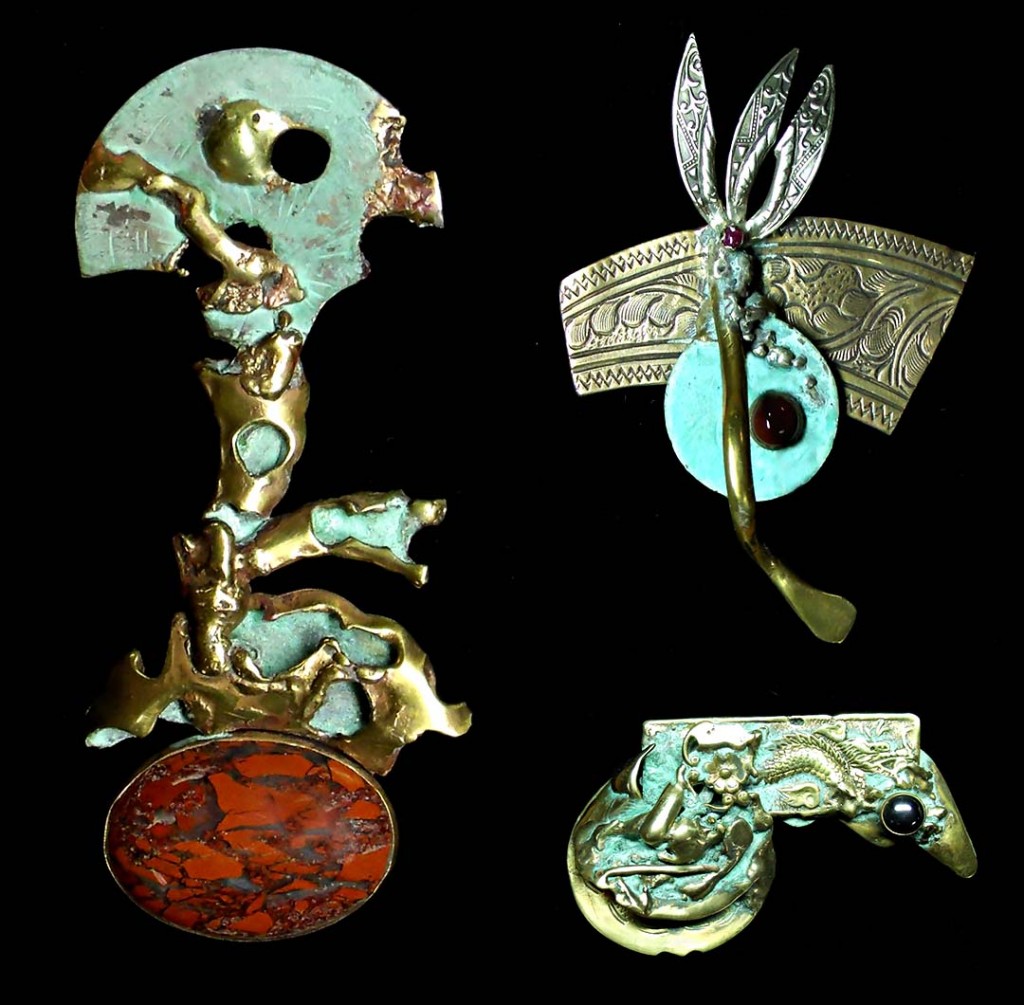

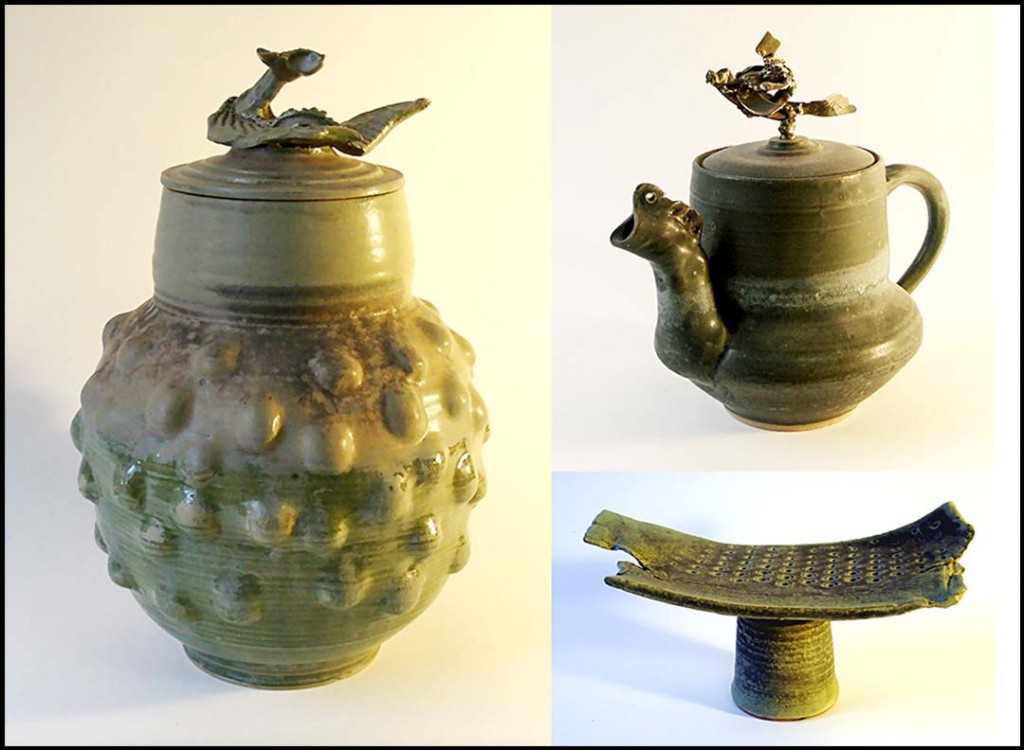
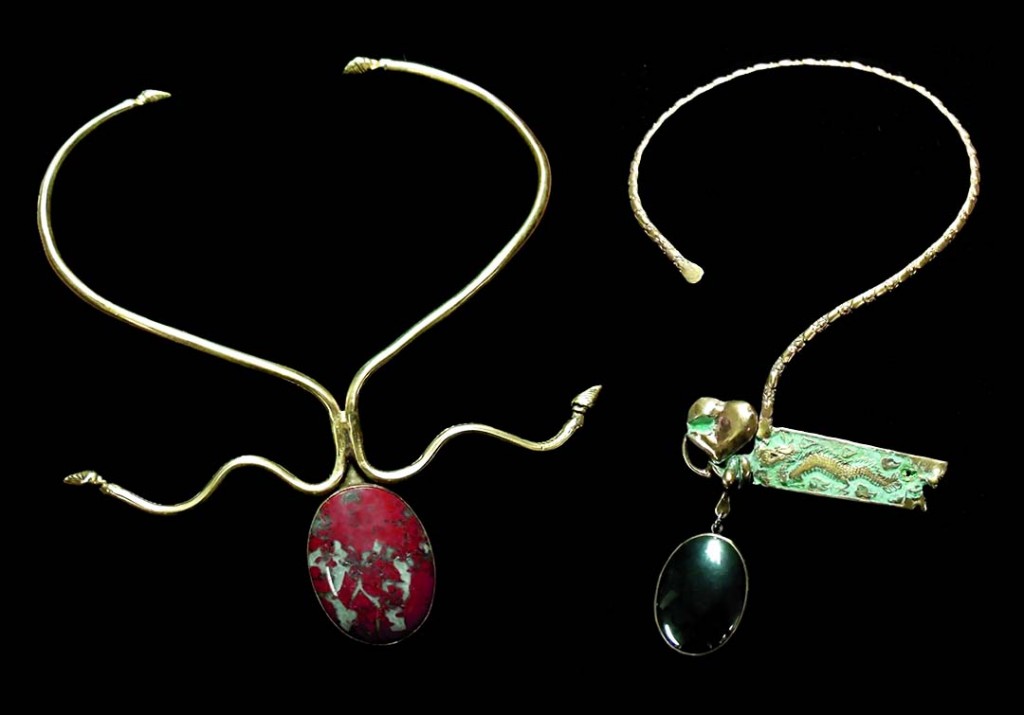
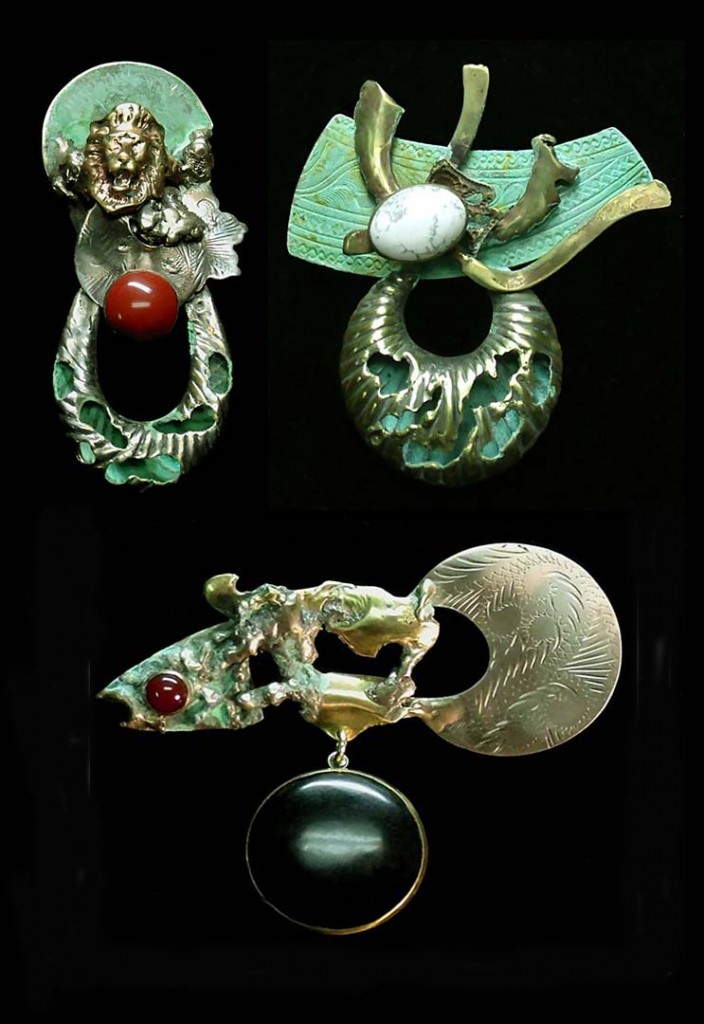
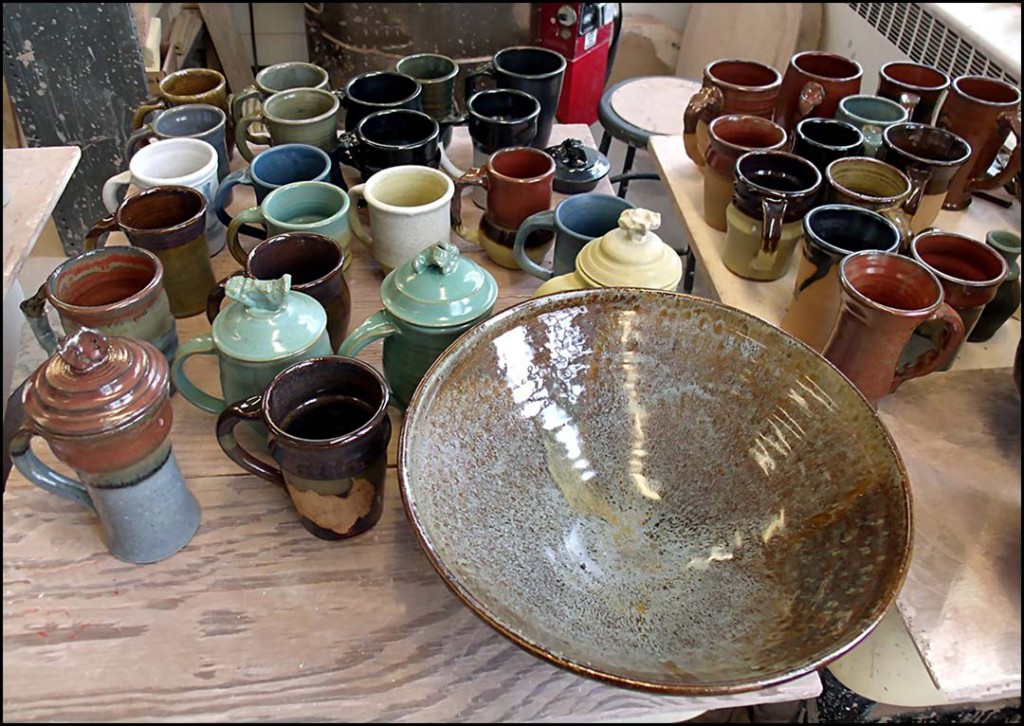
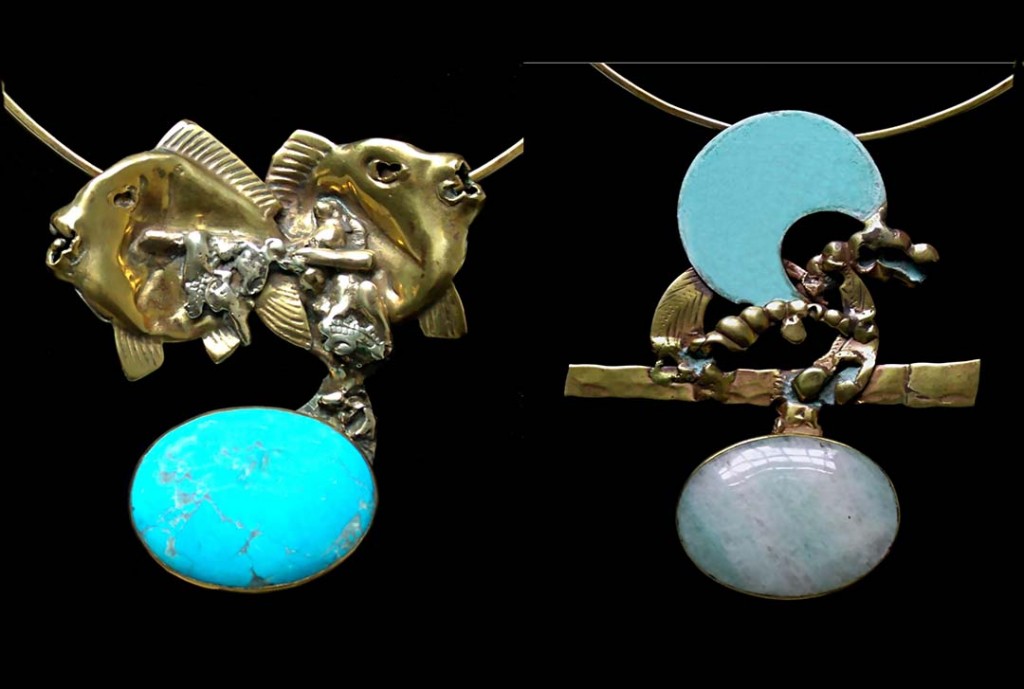
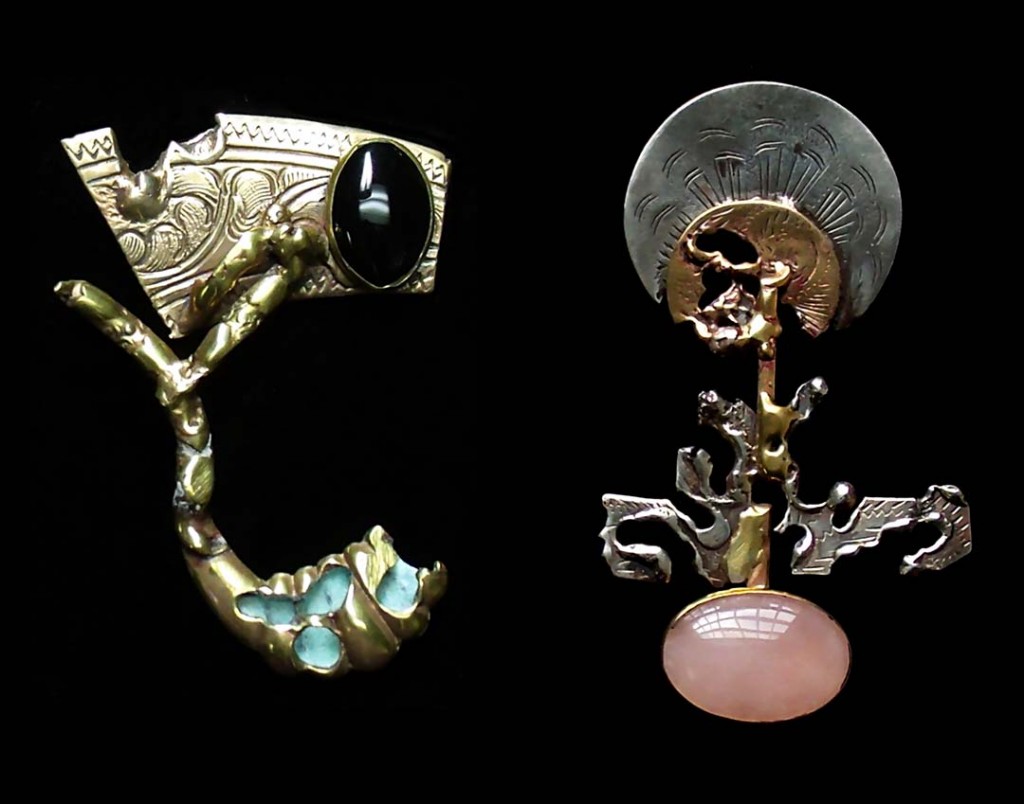
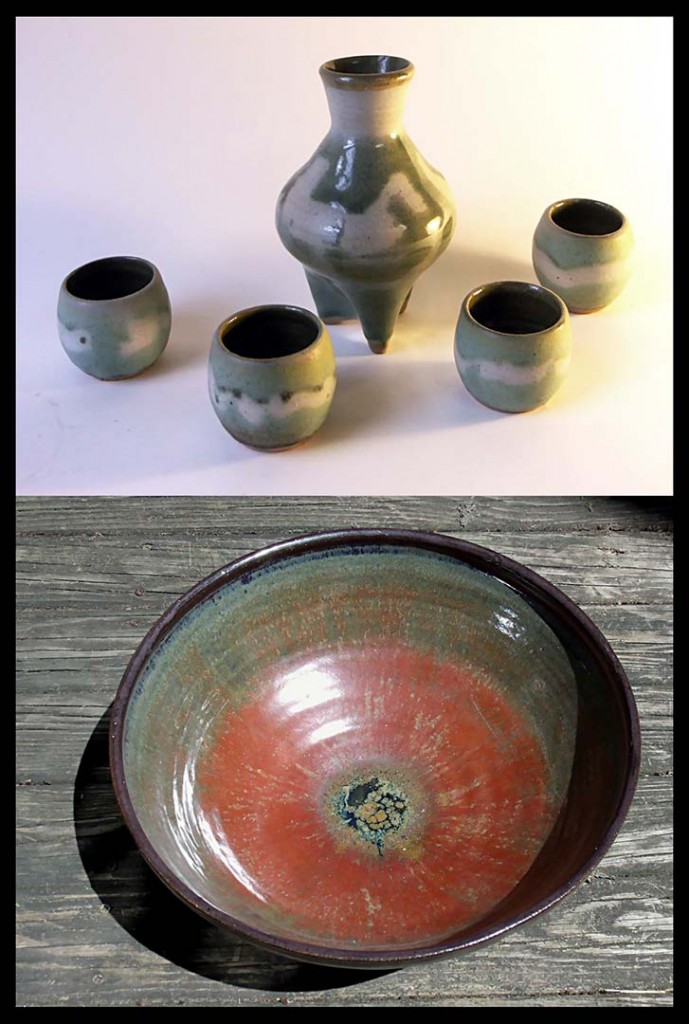
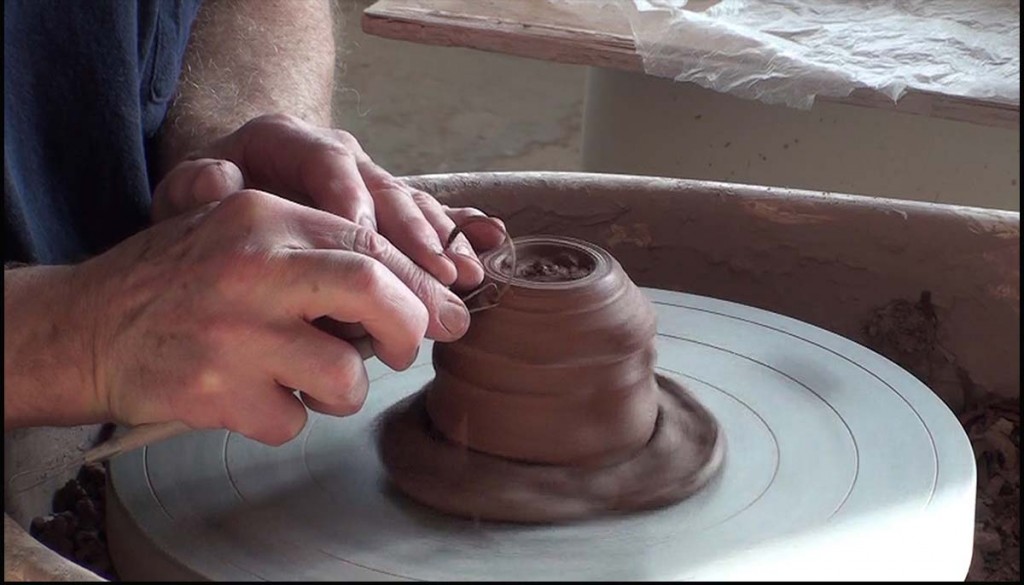



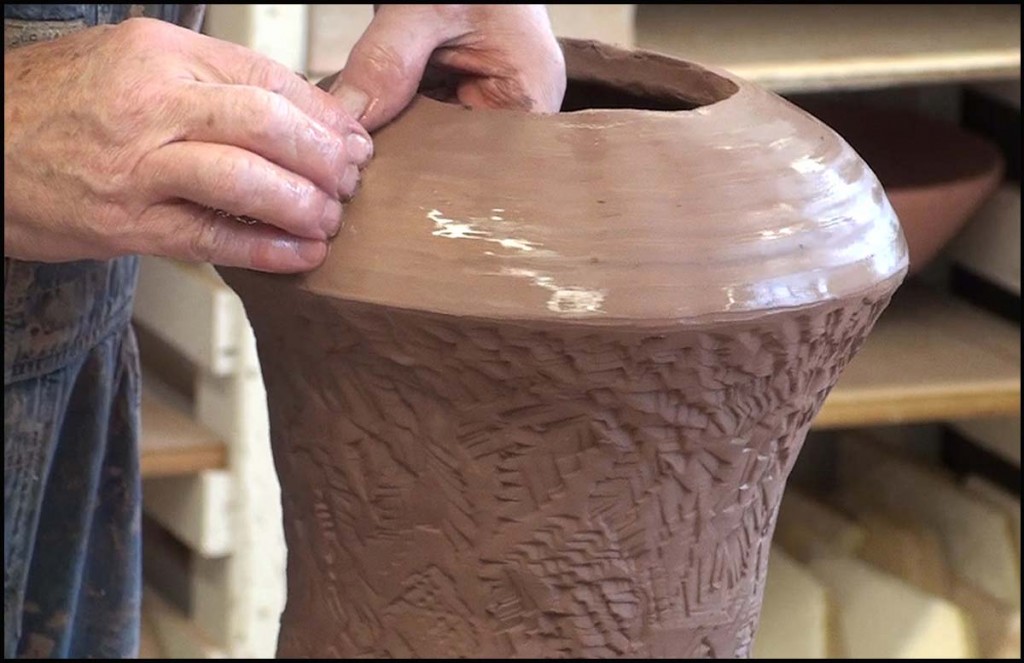
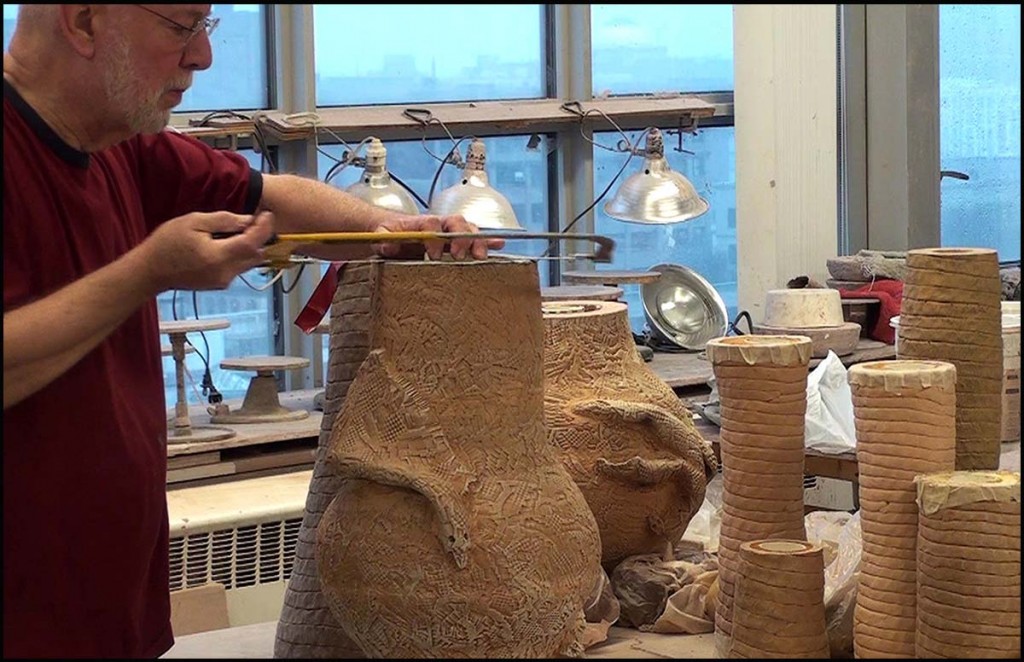
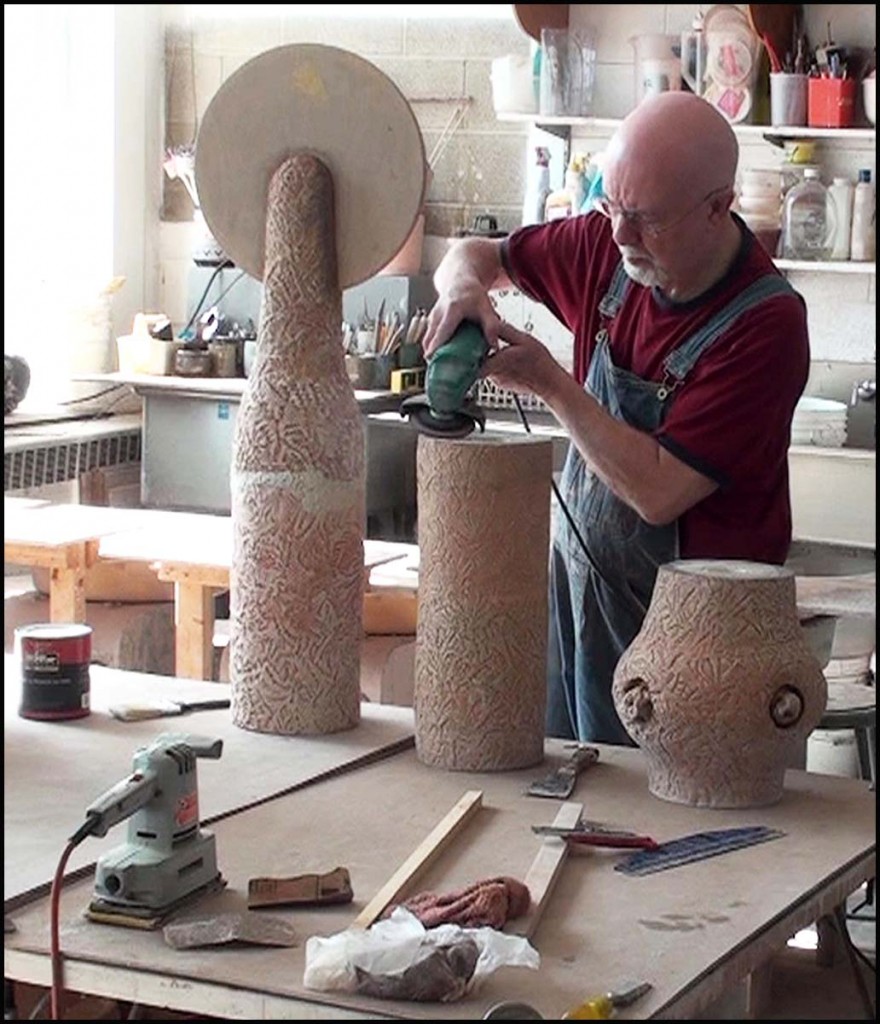
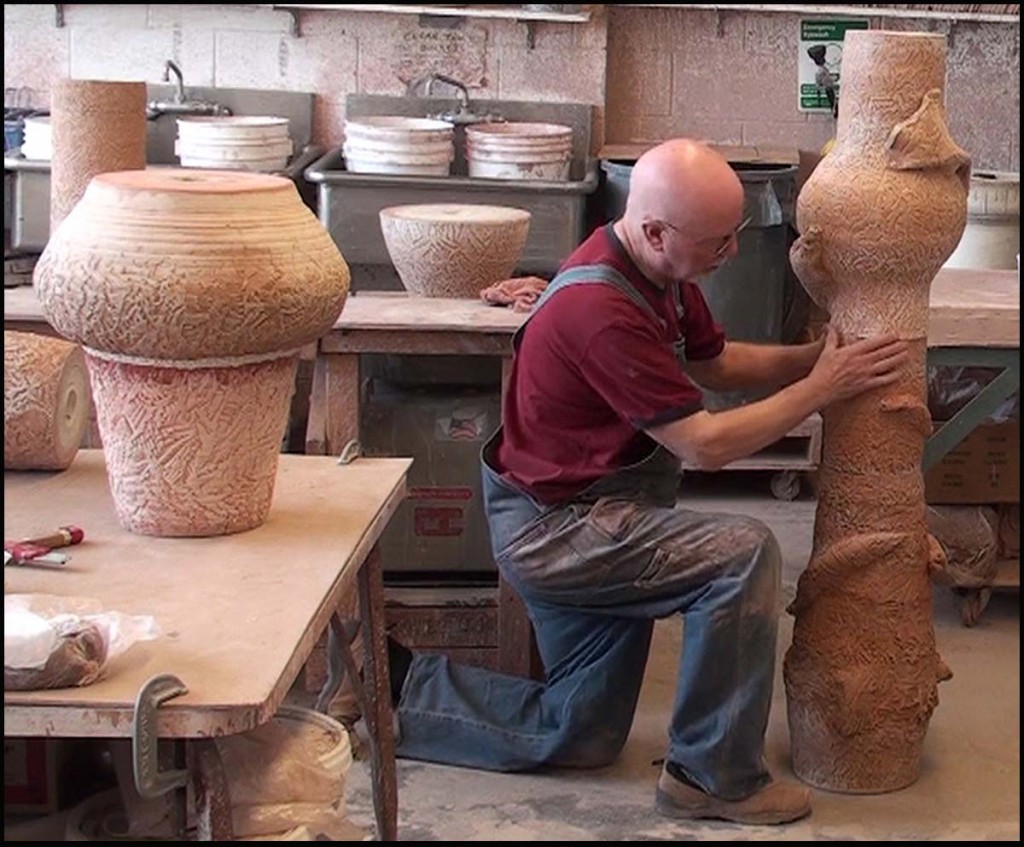

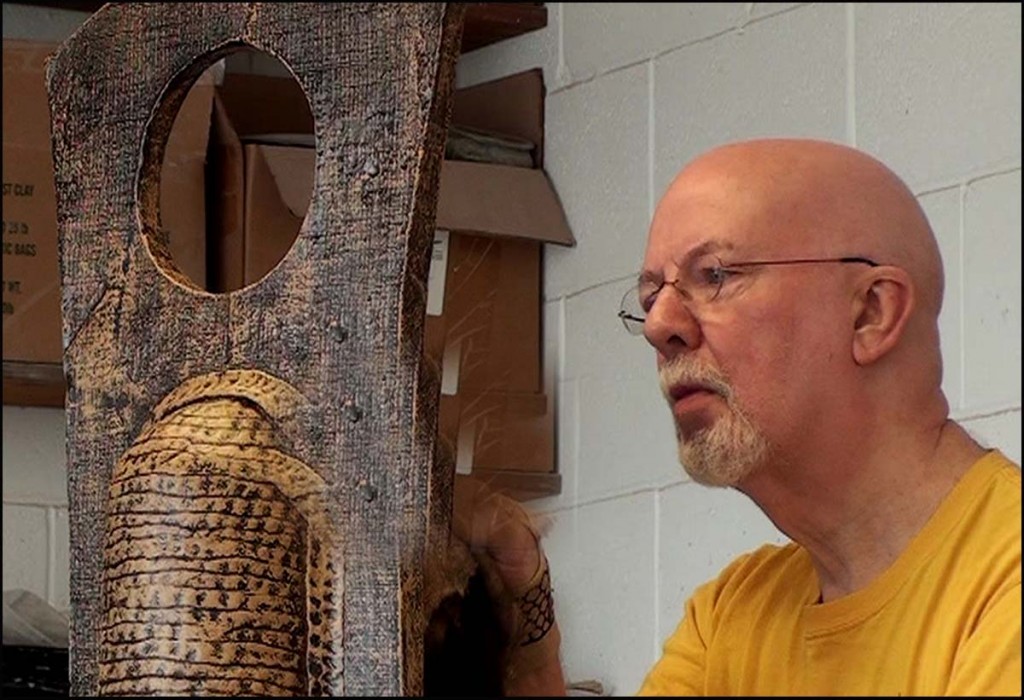
Leave a Reply